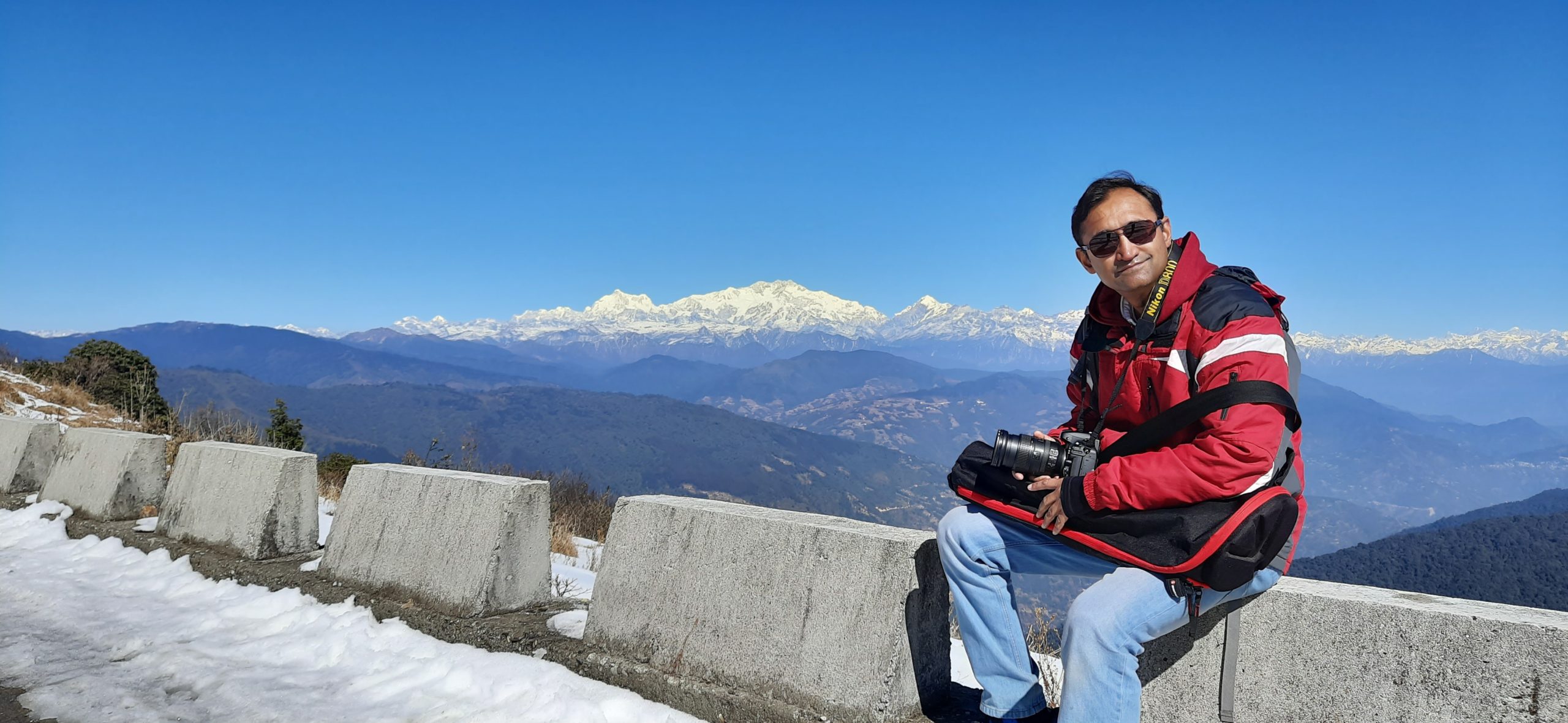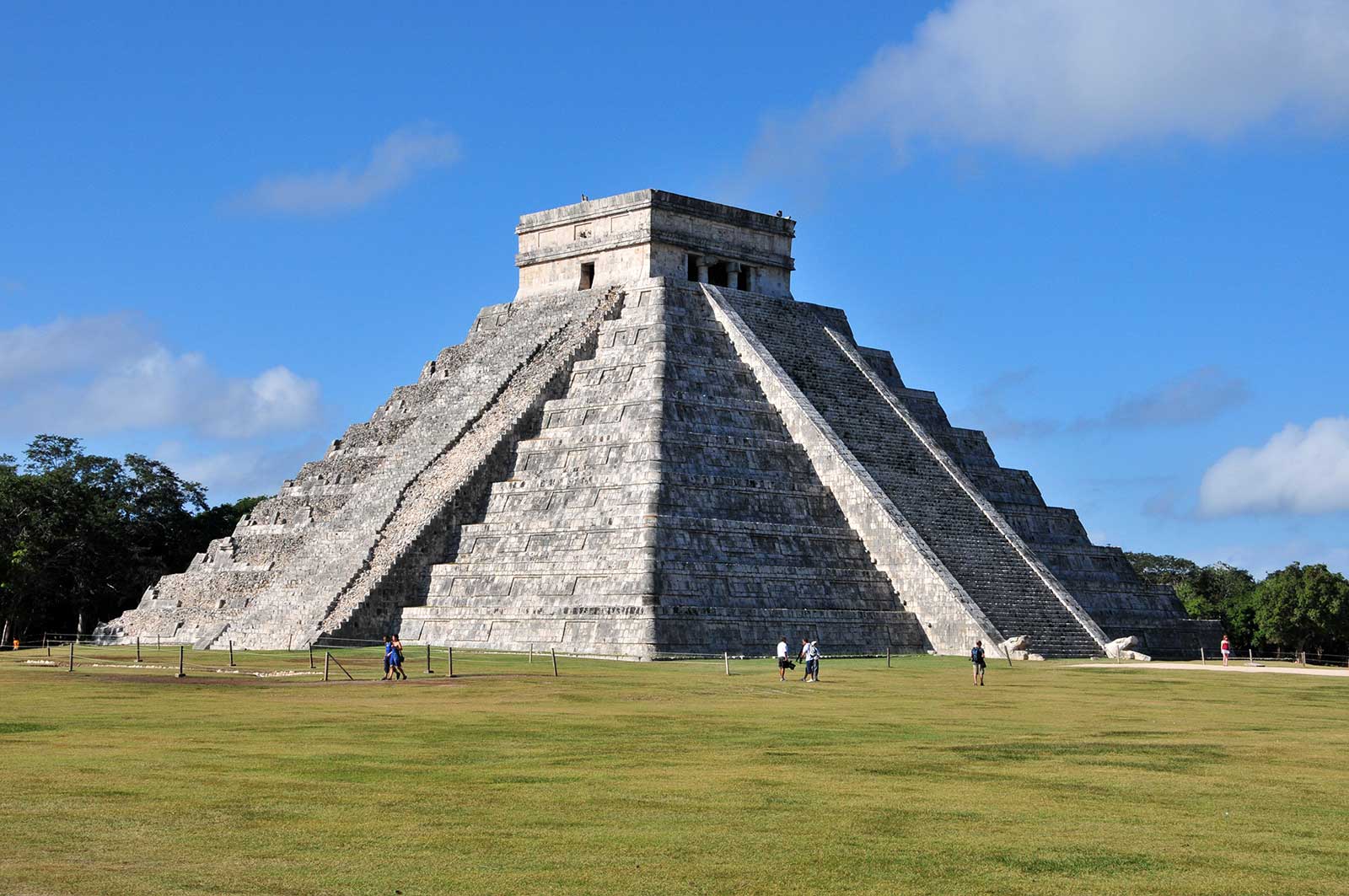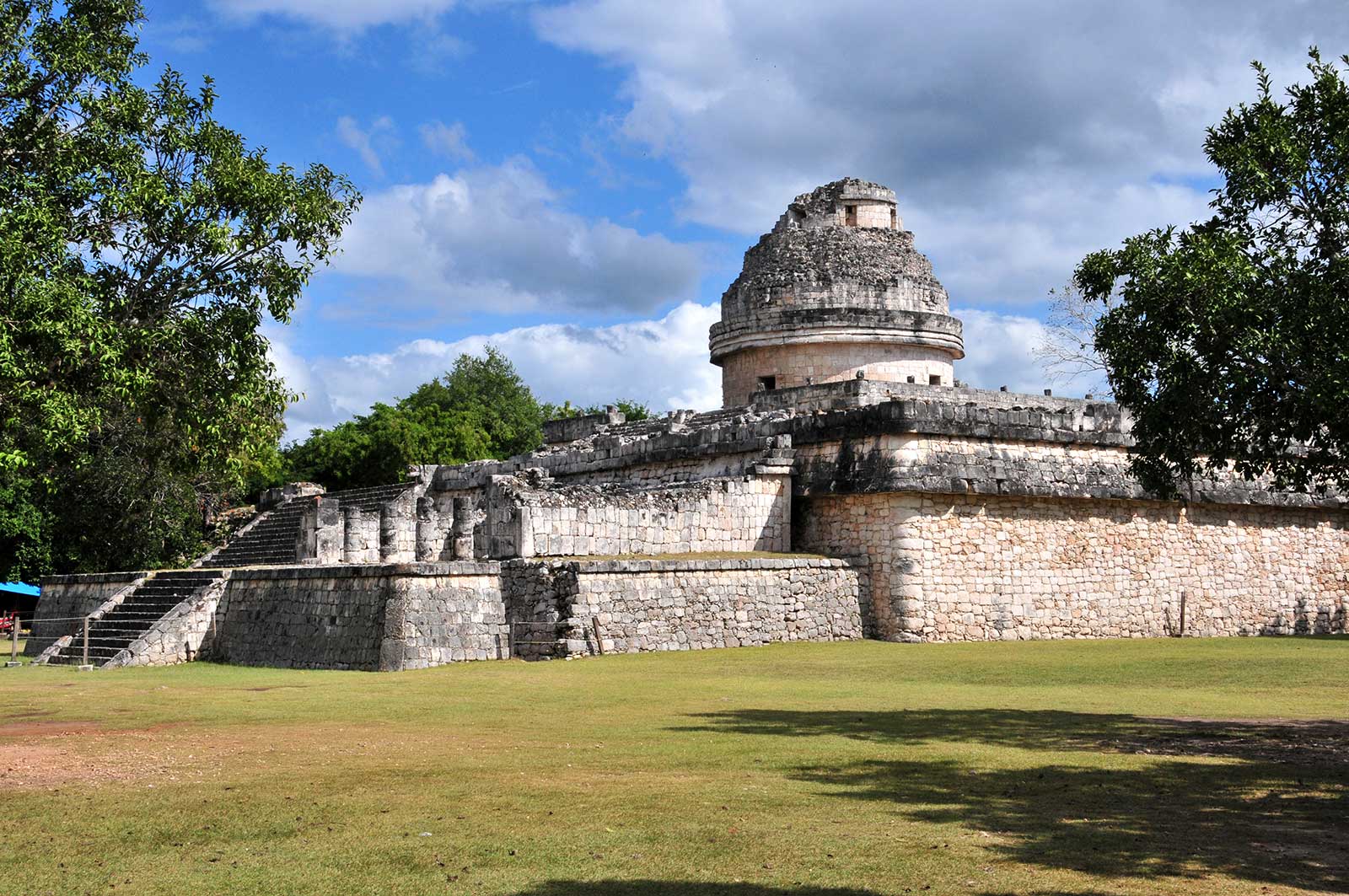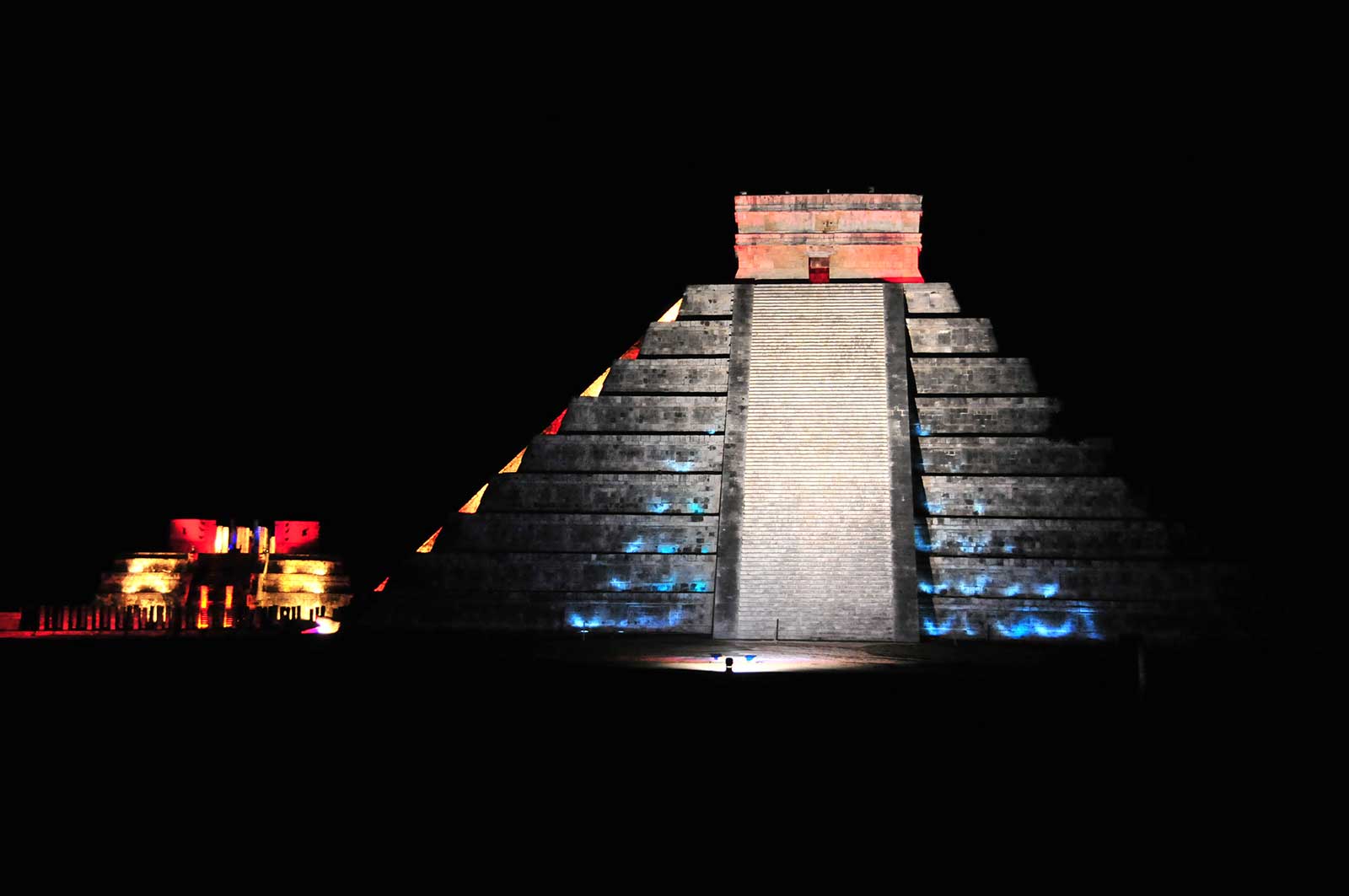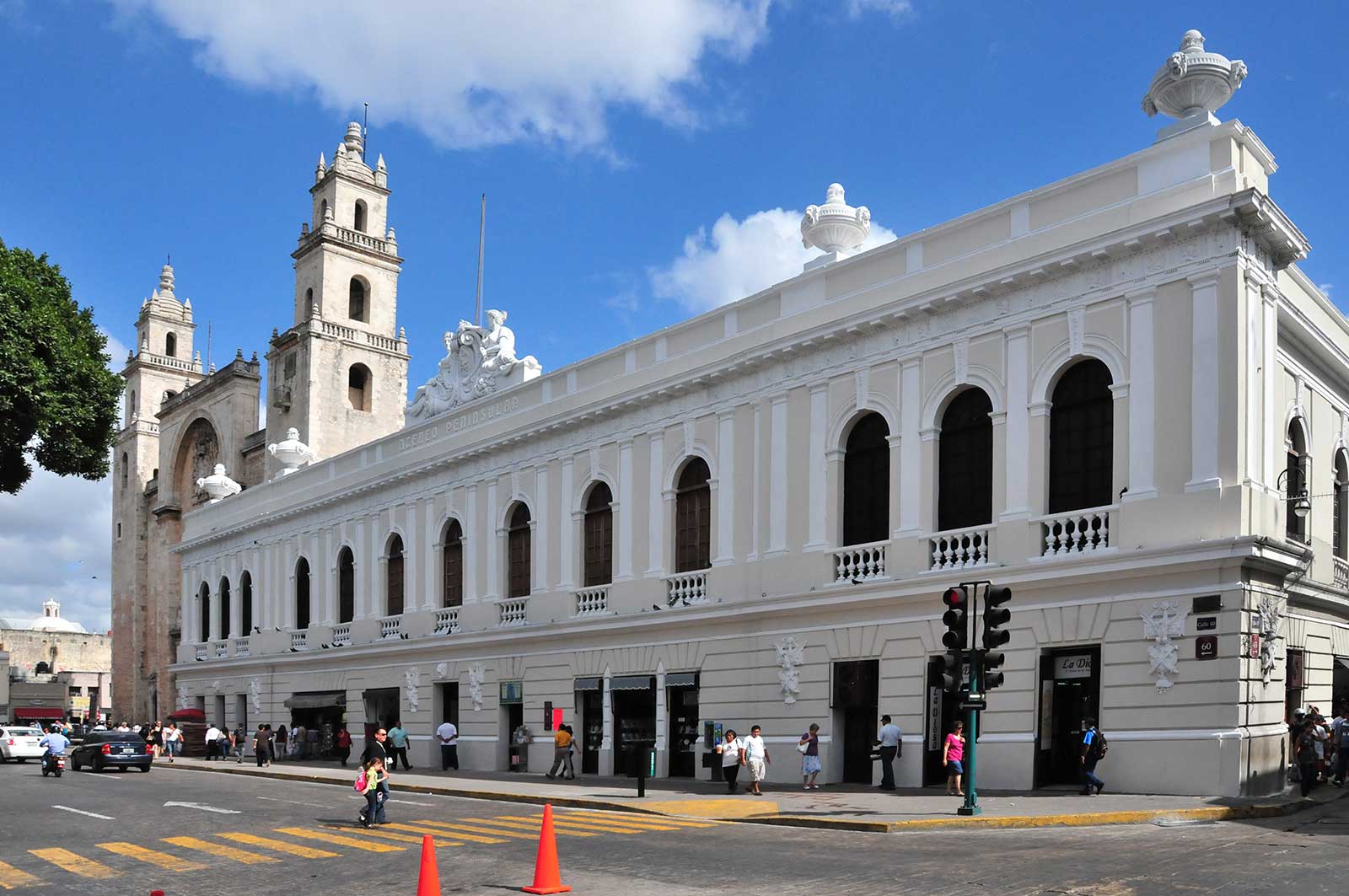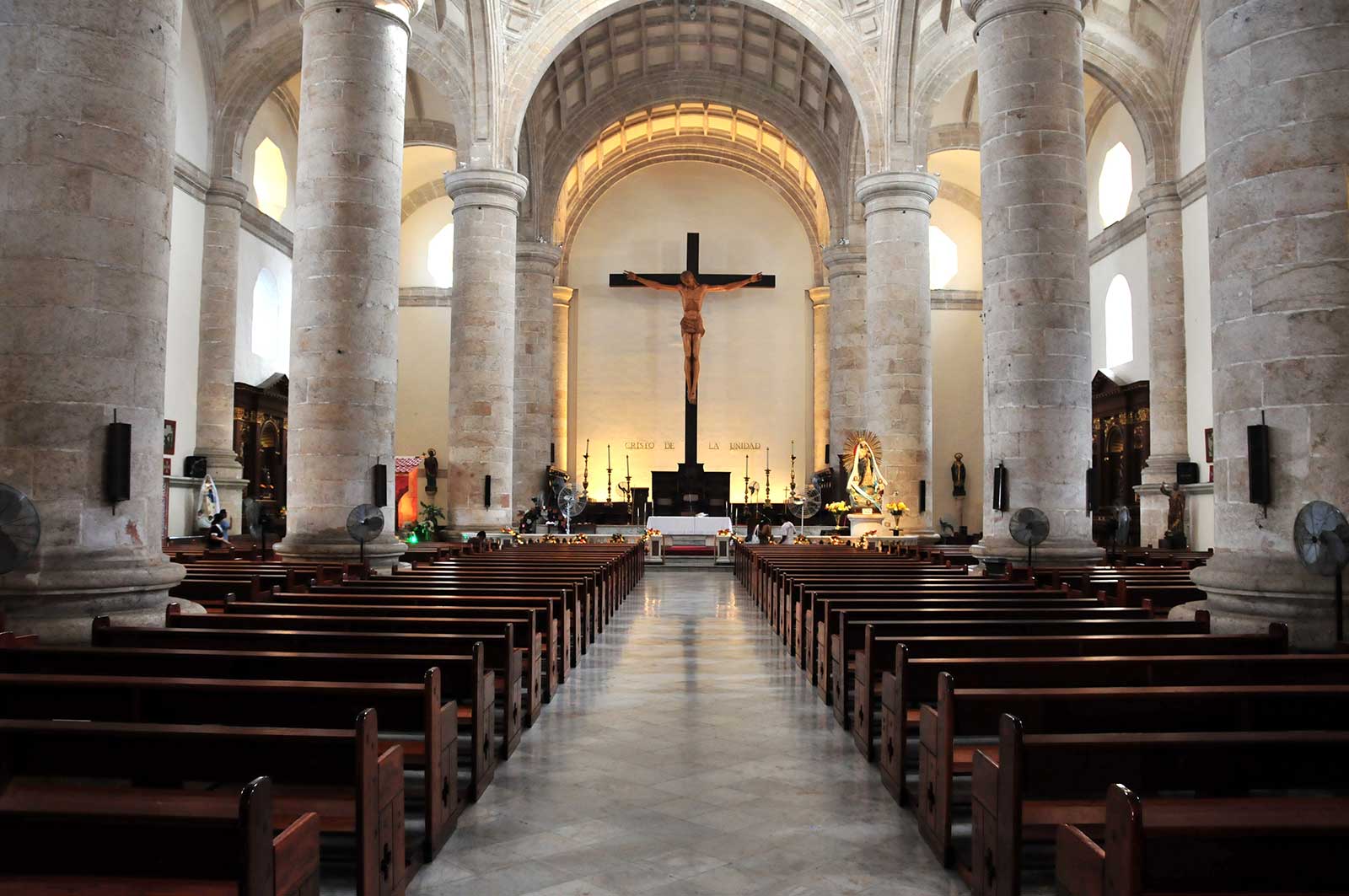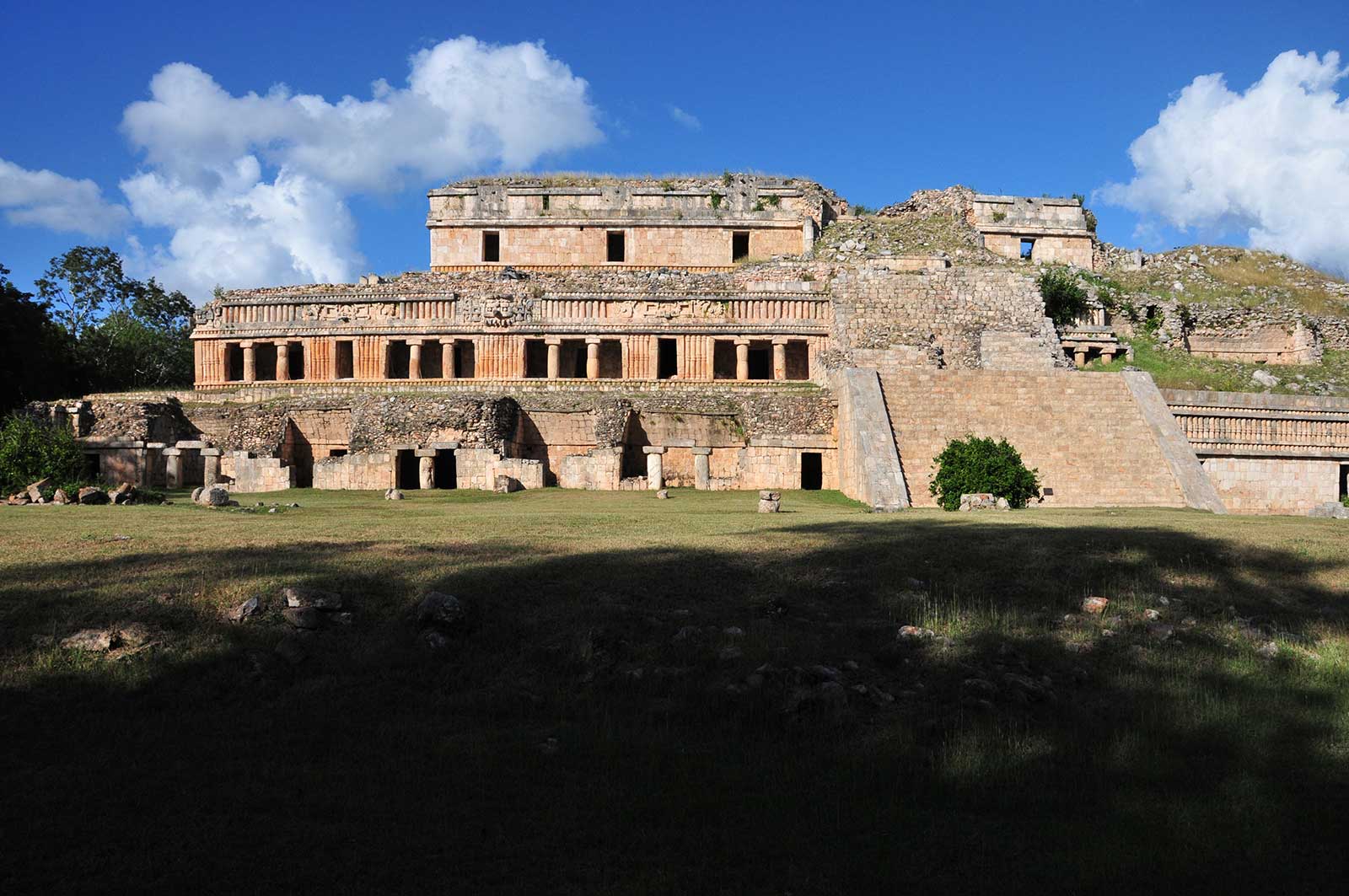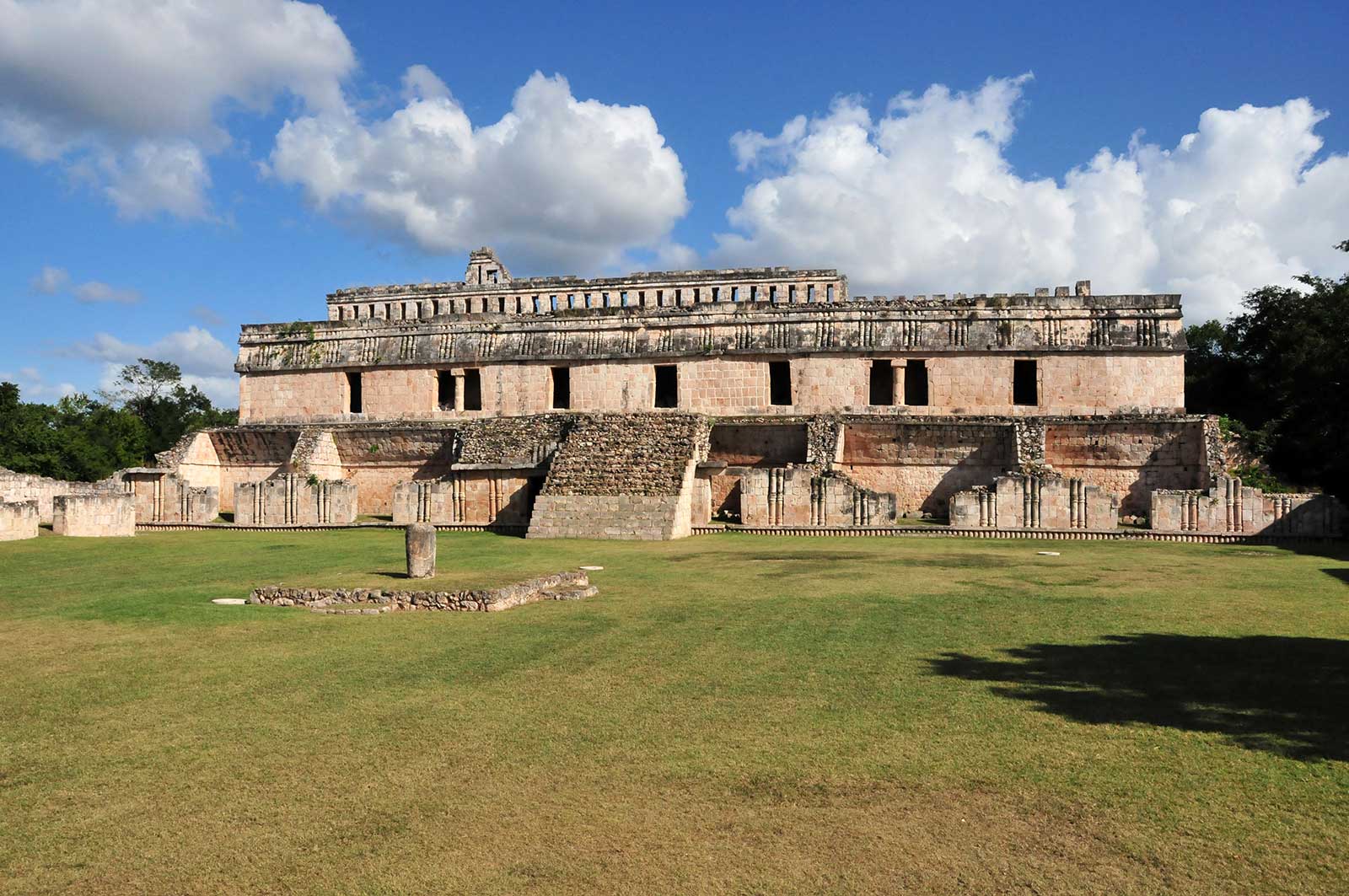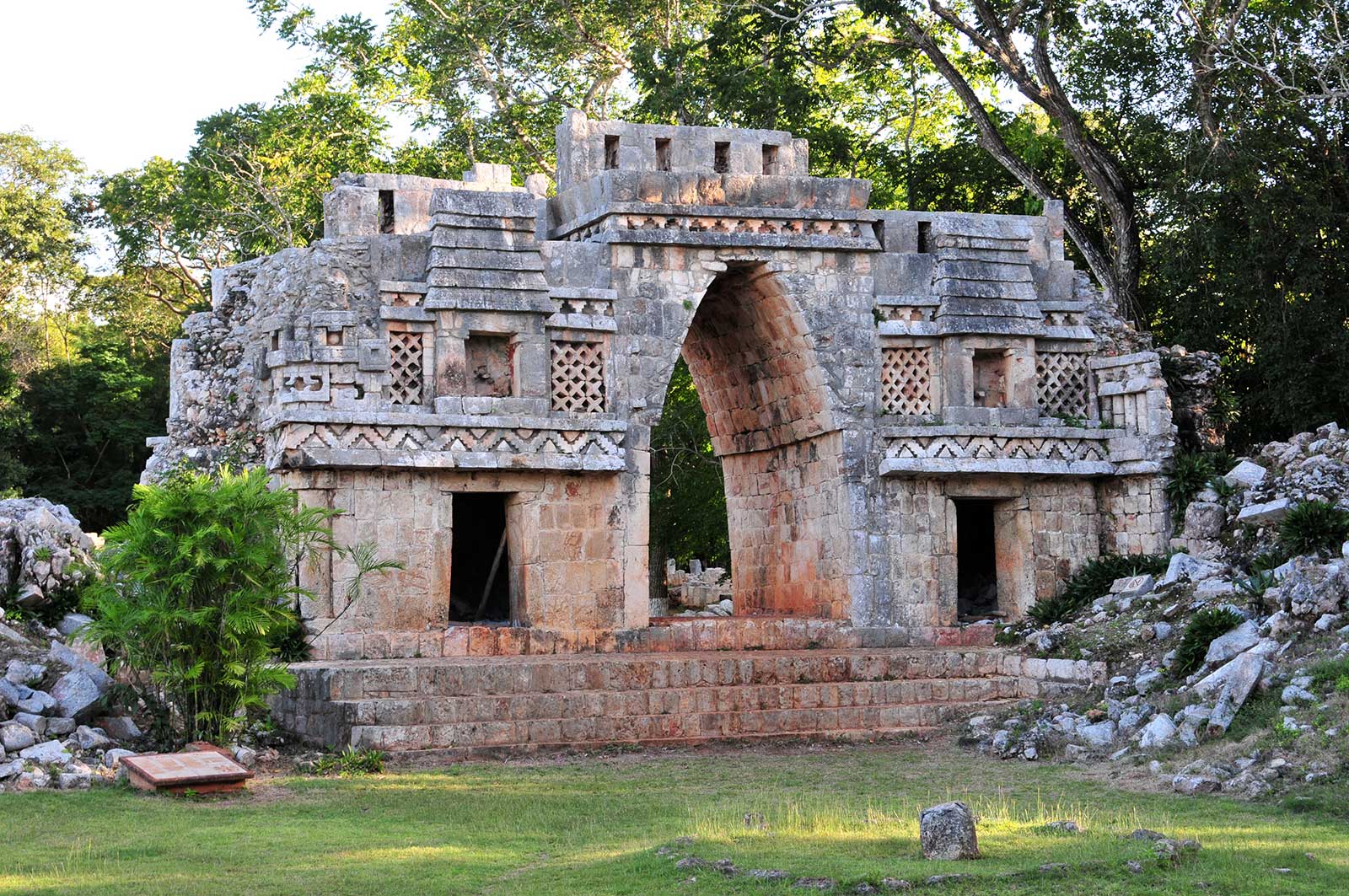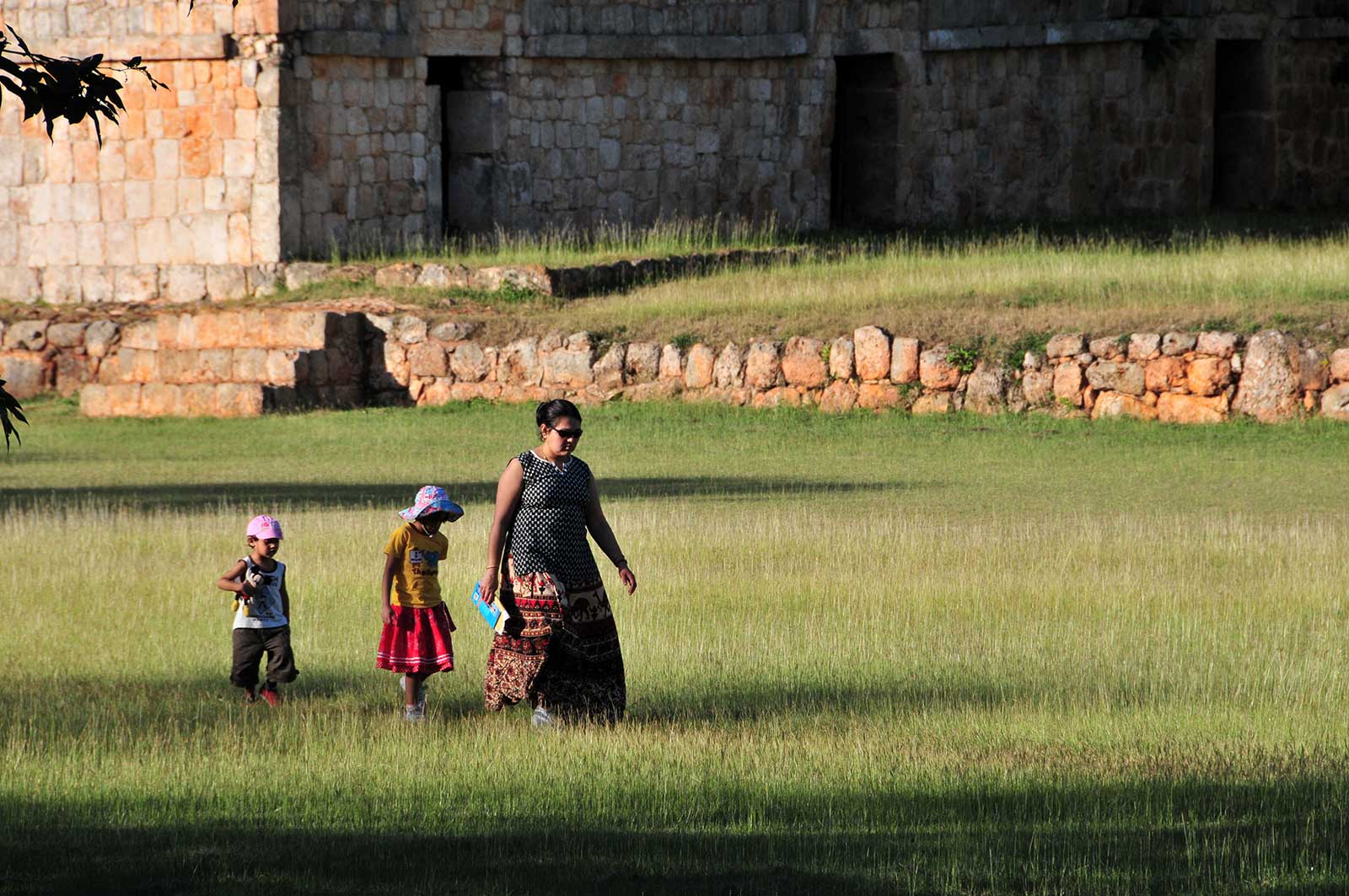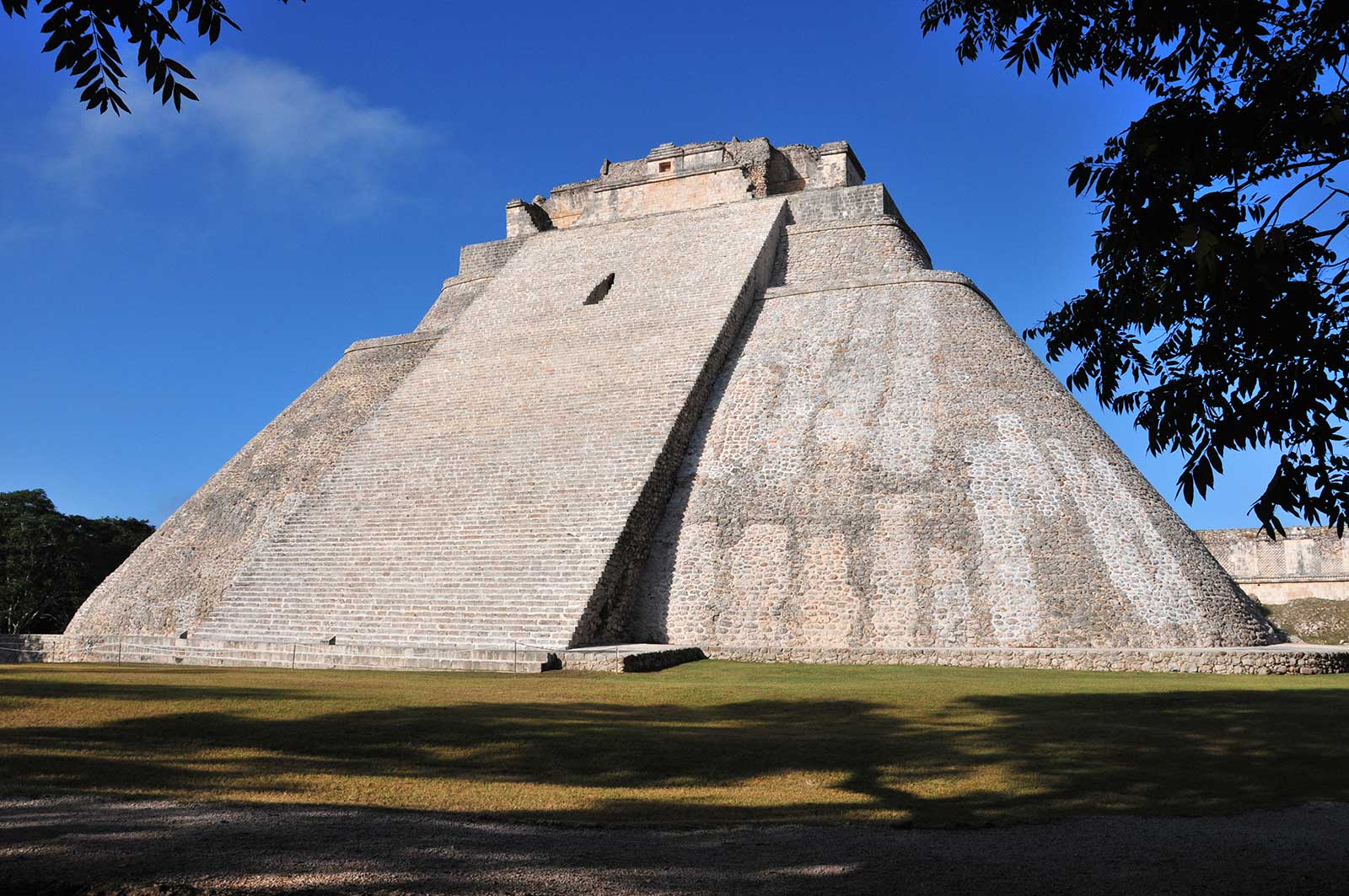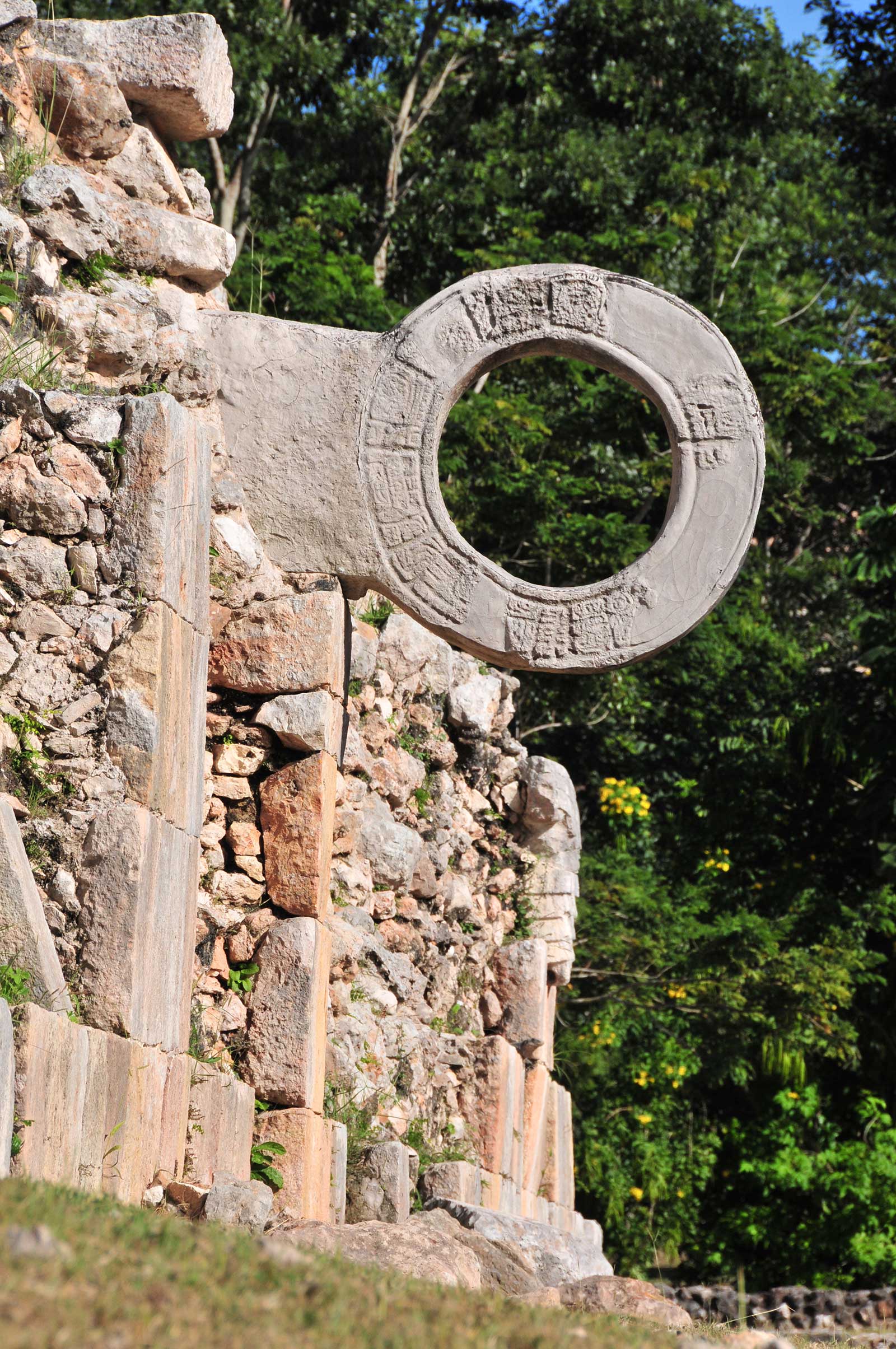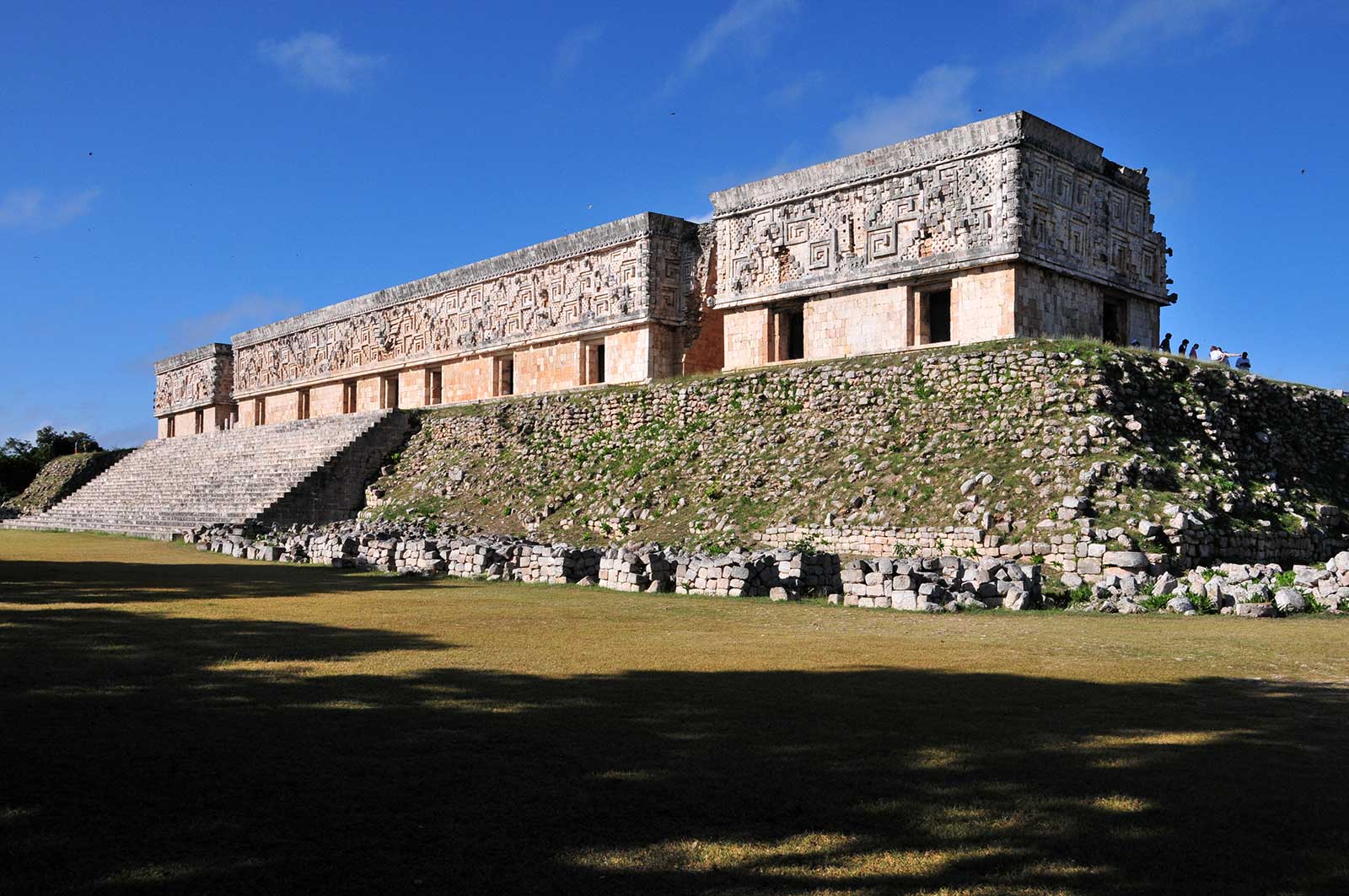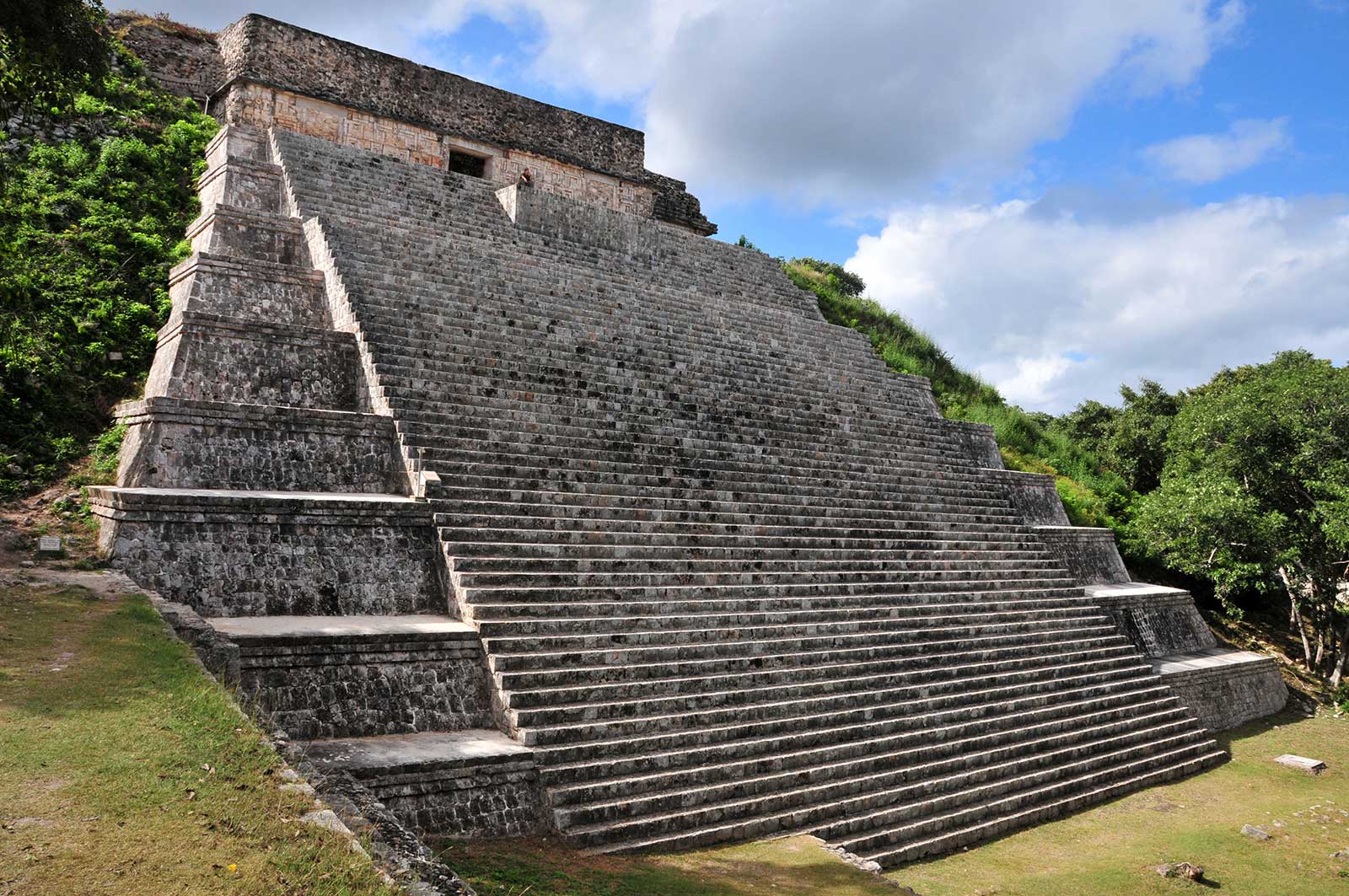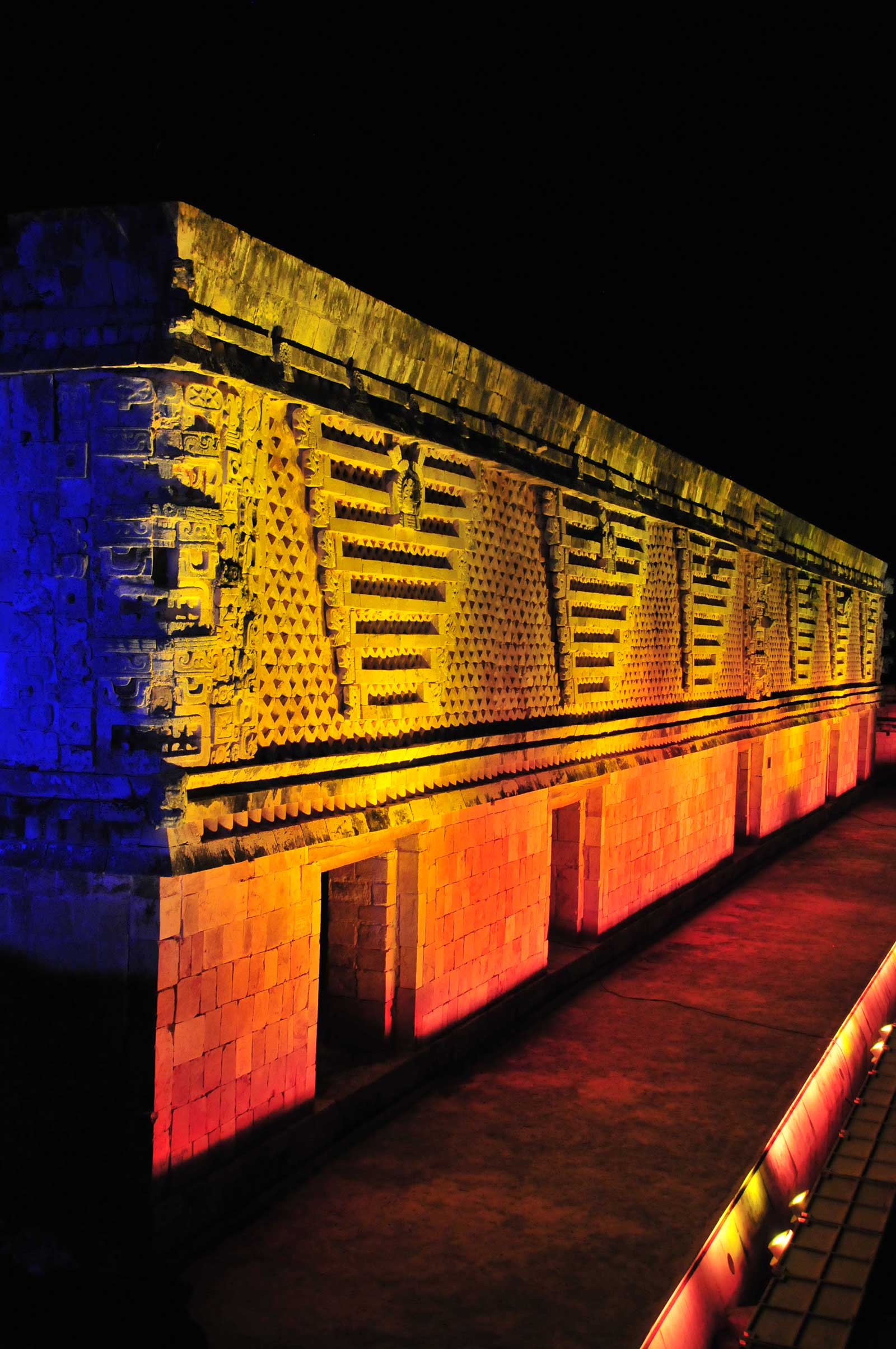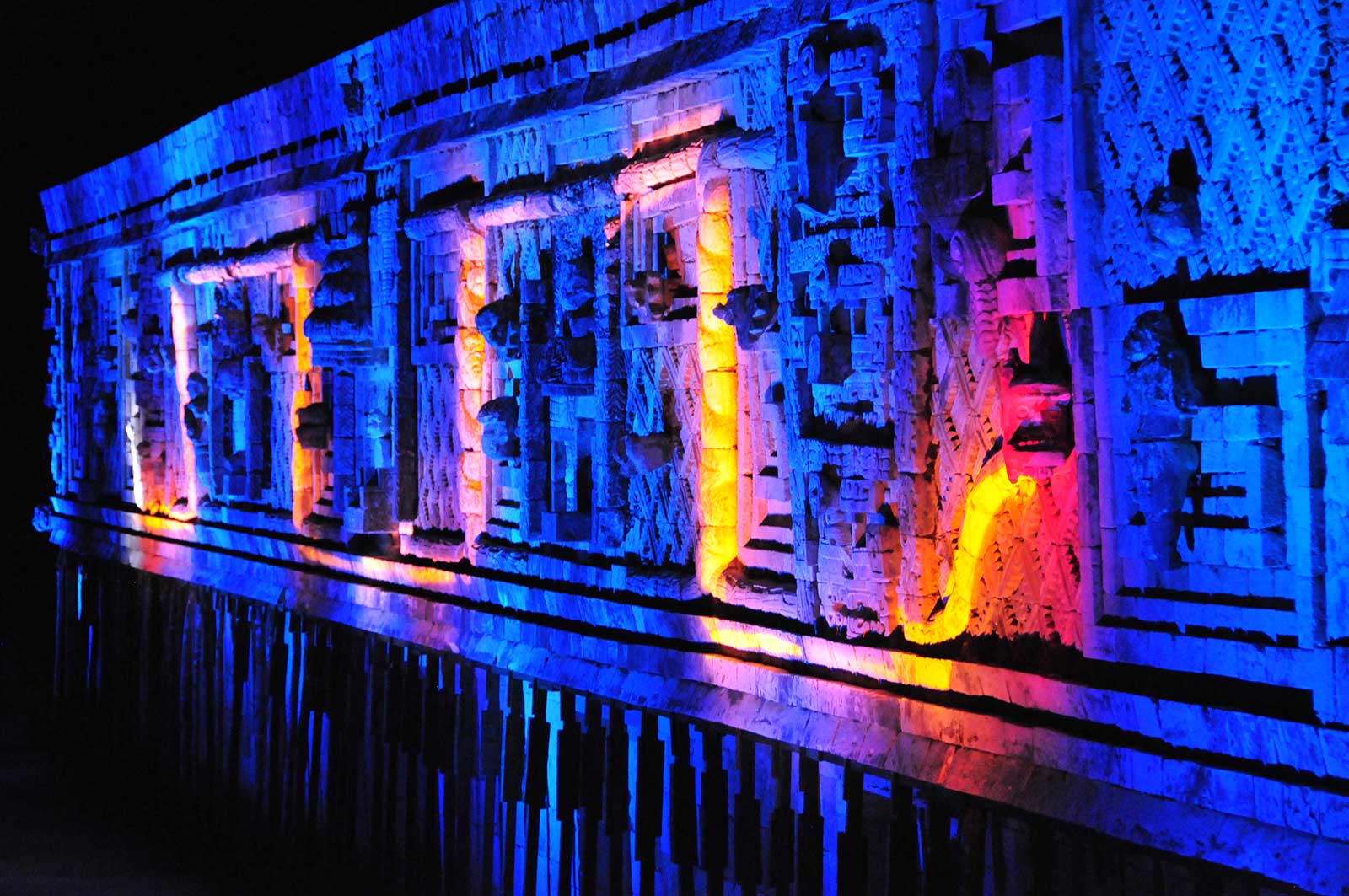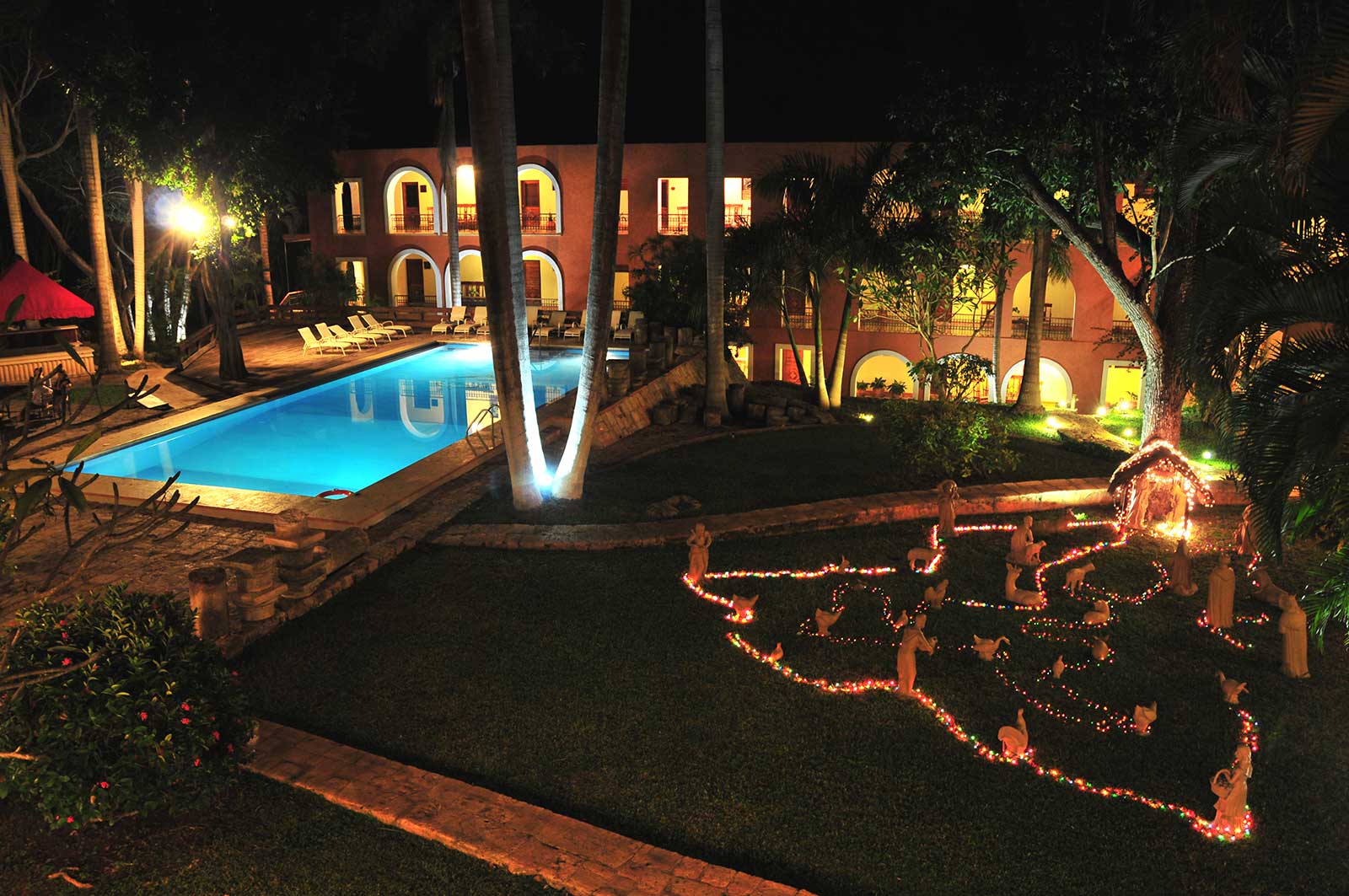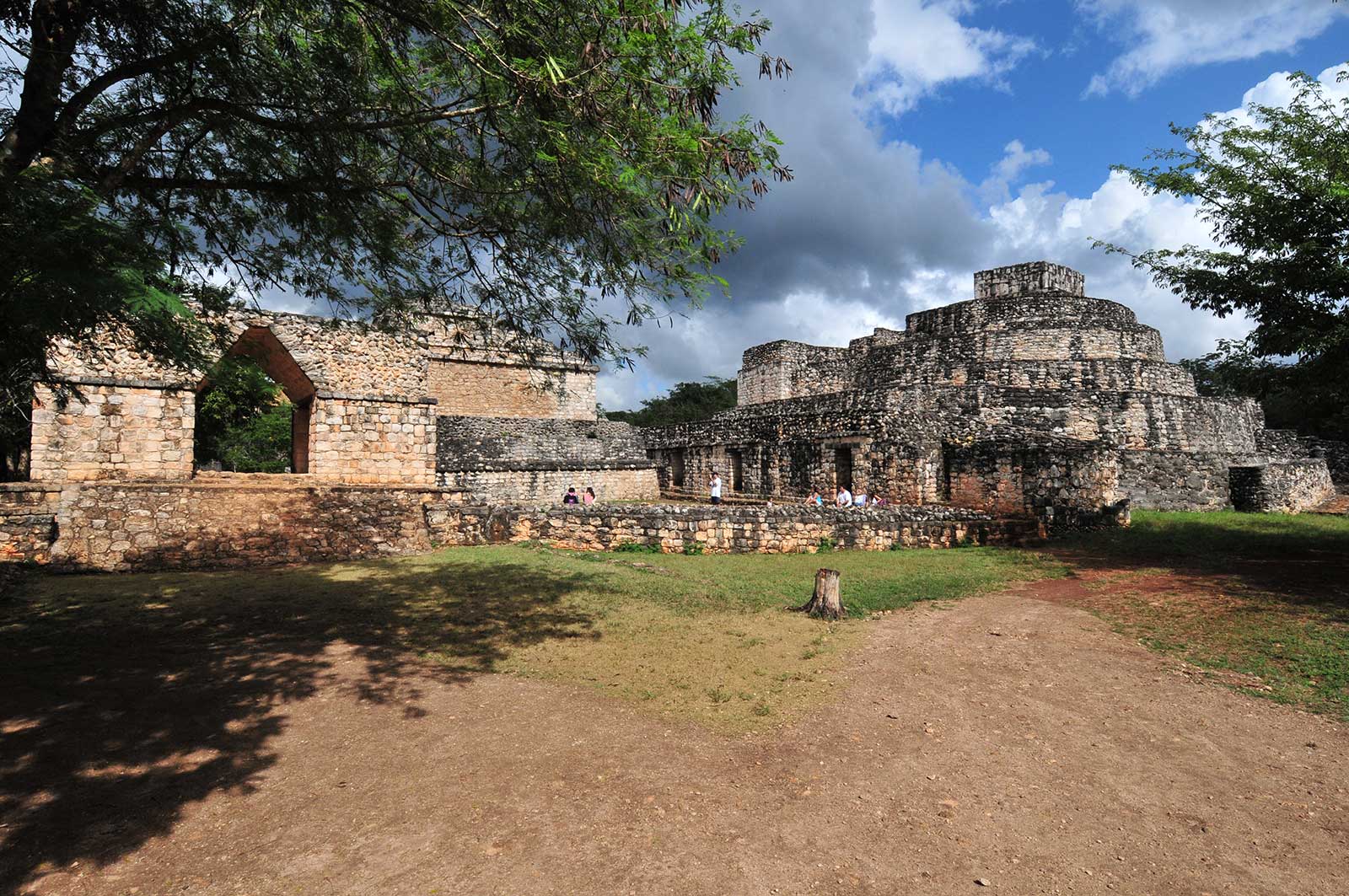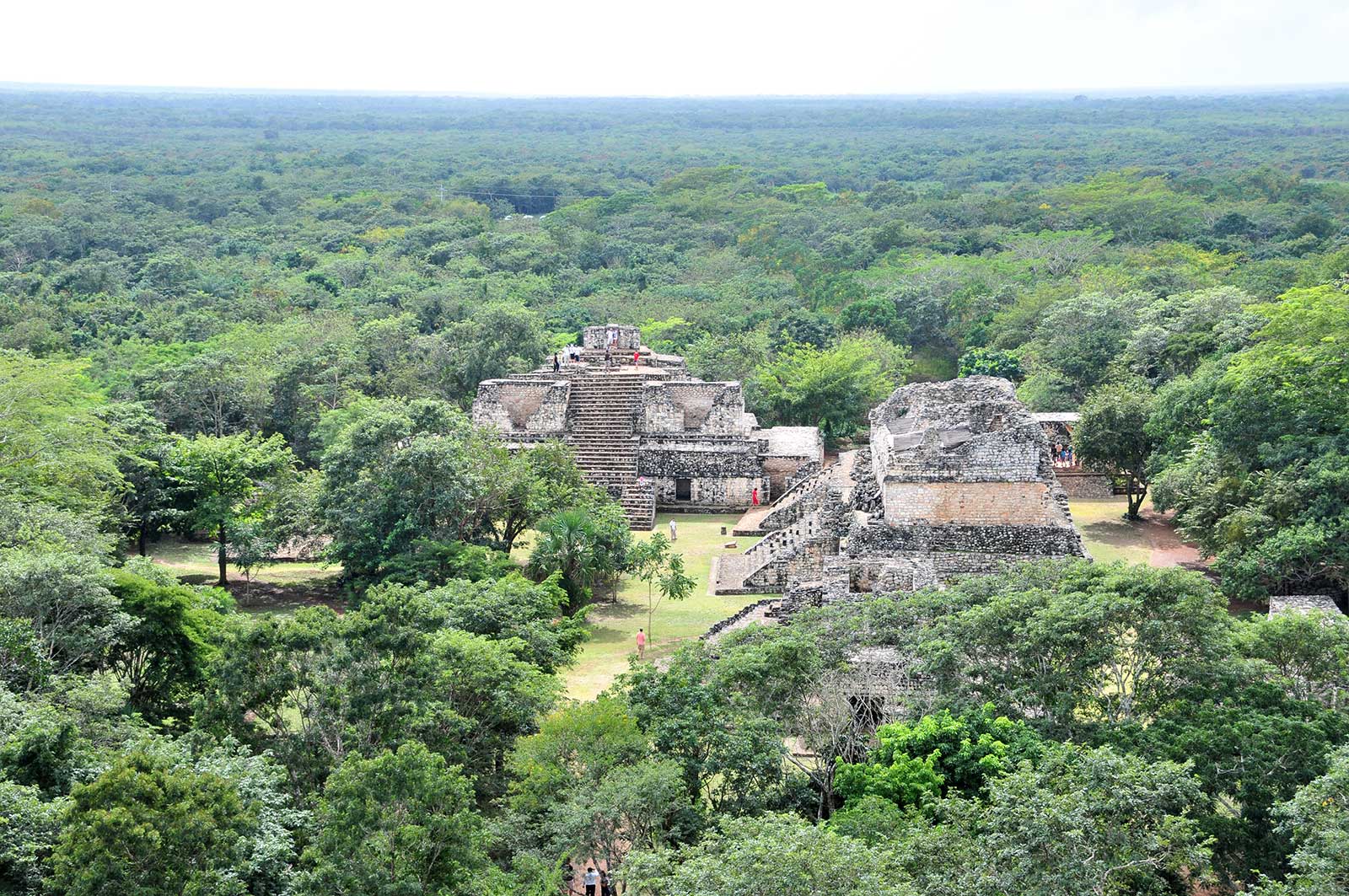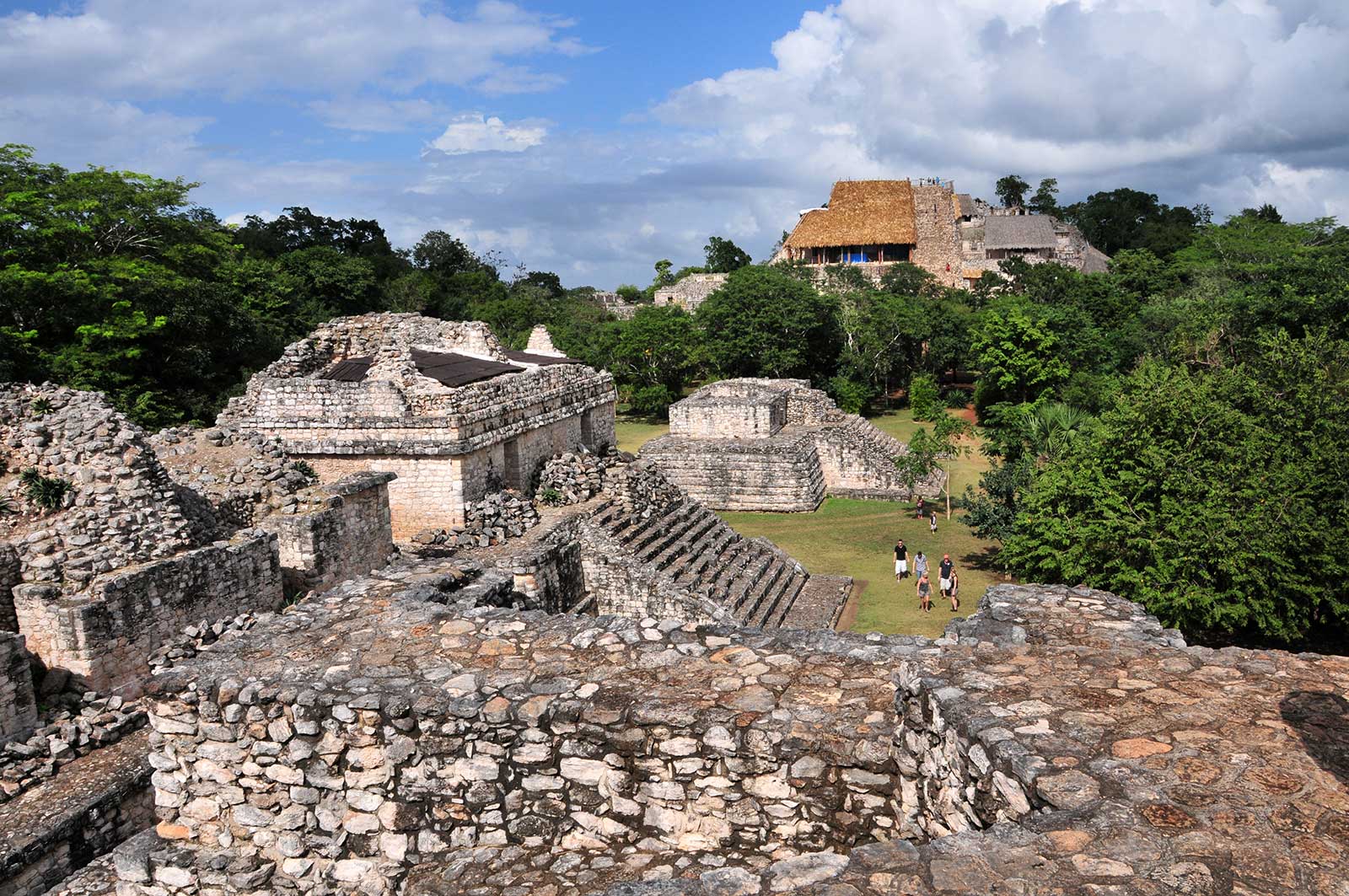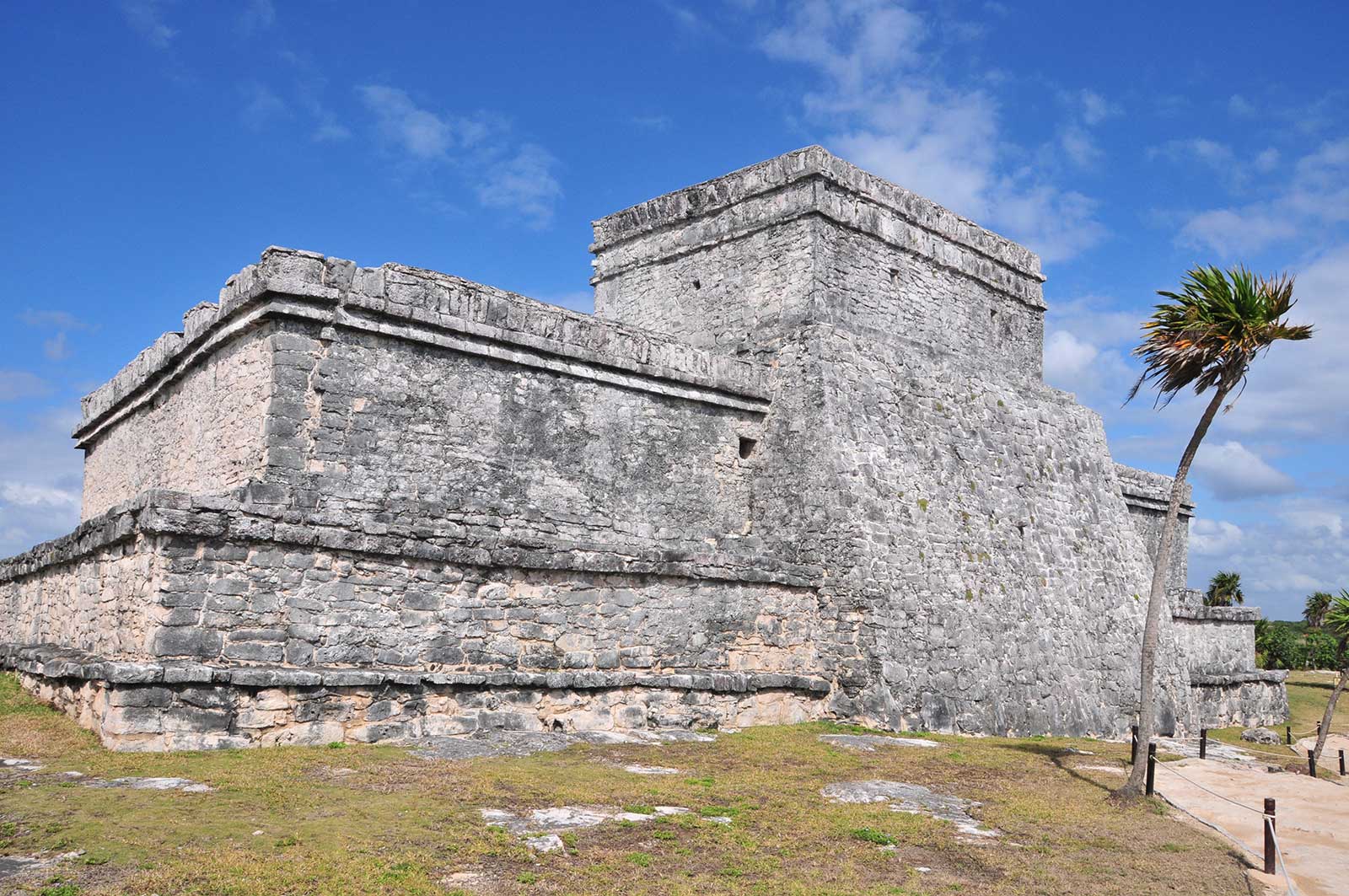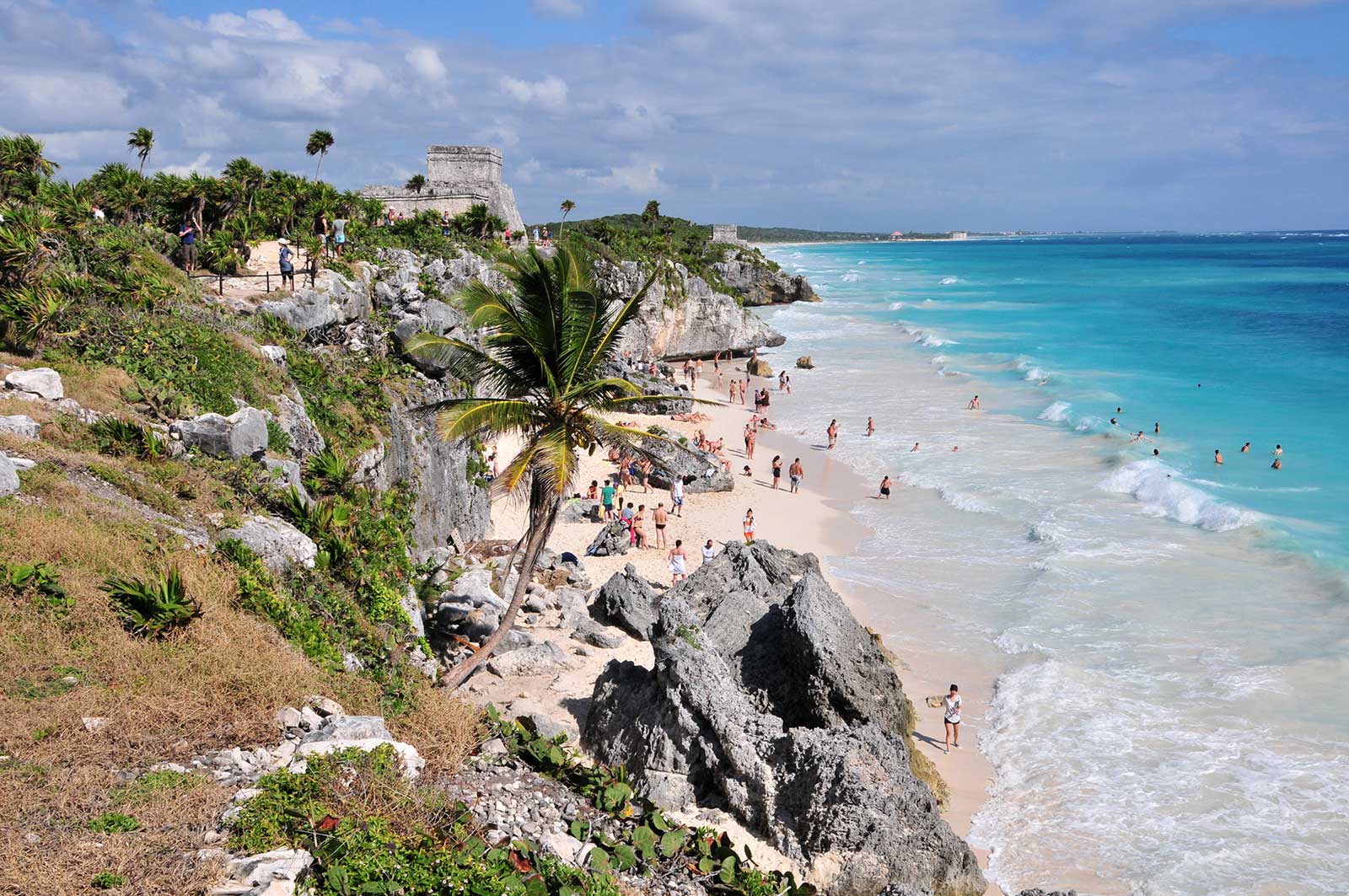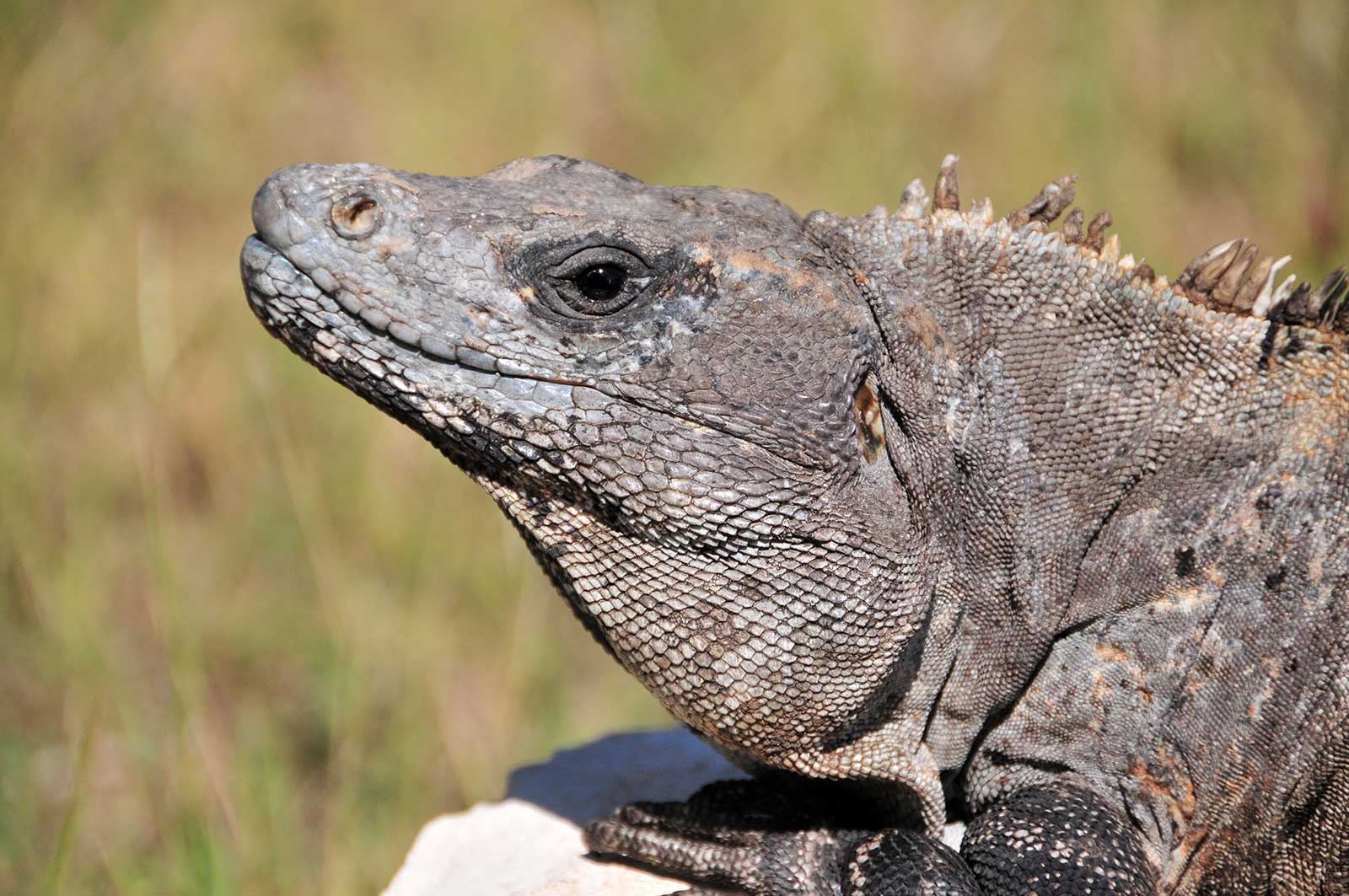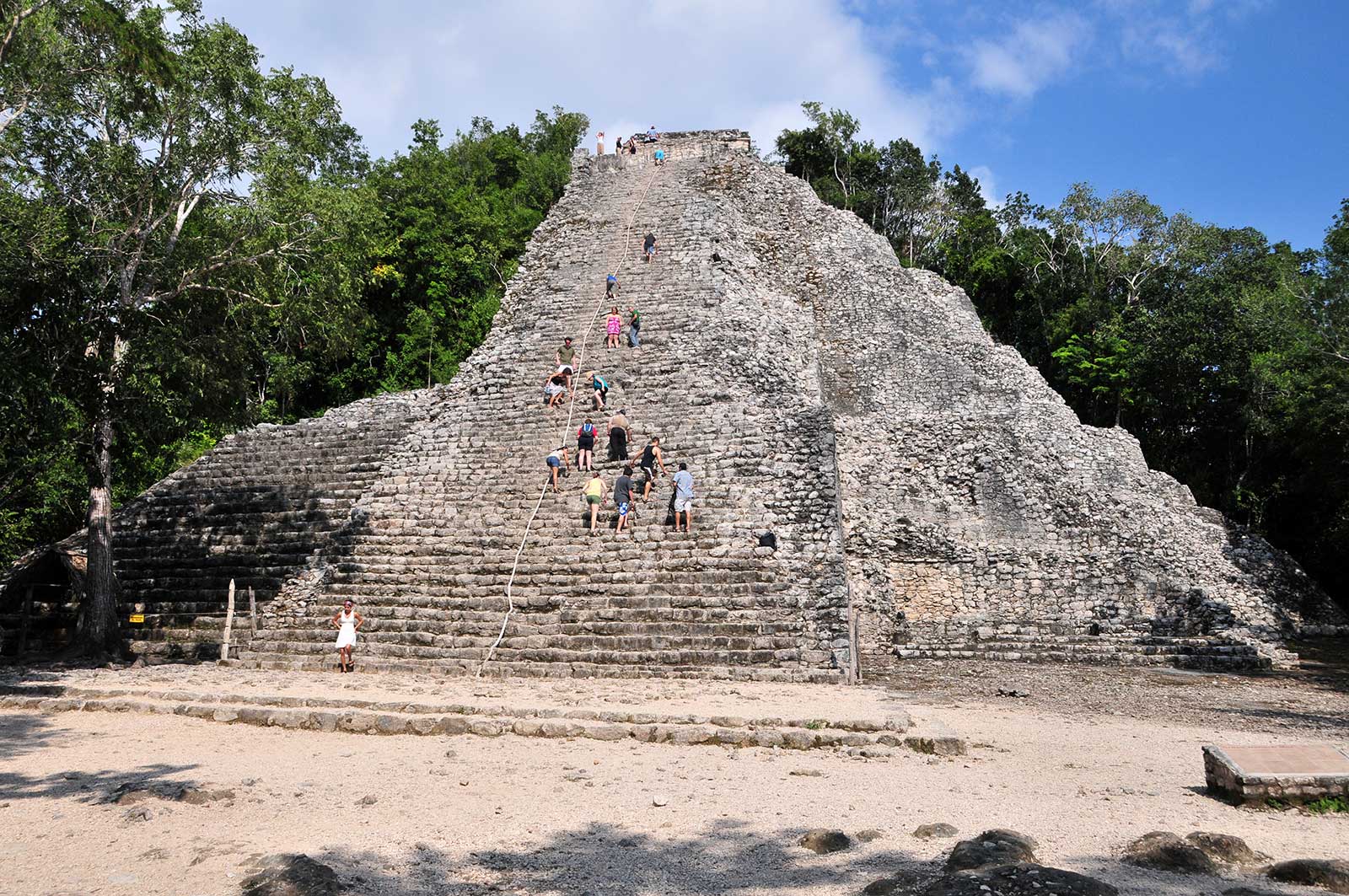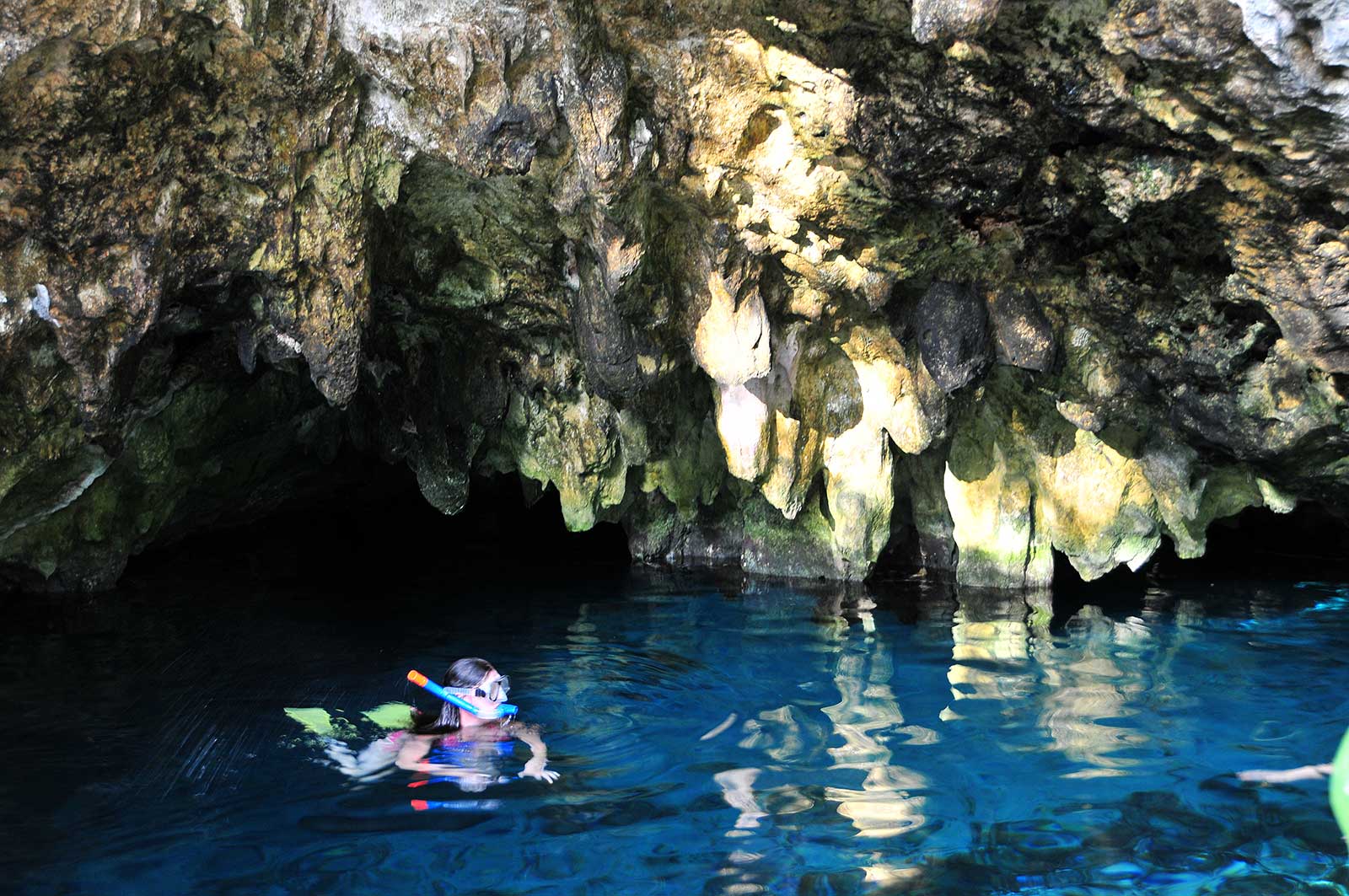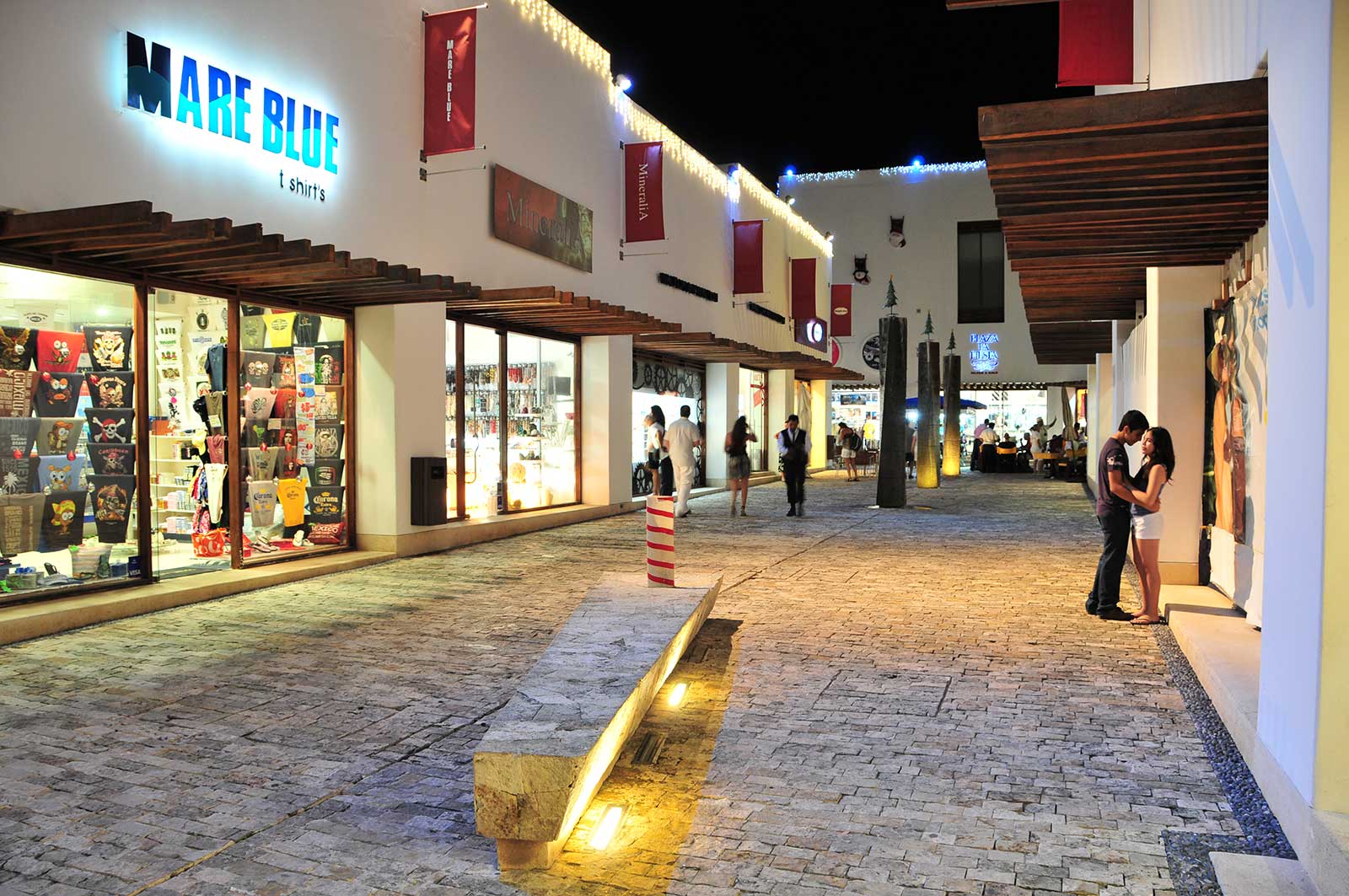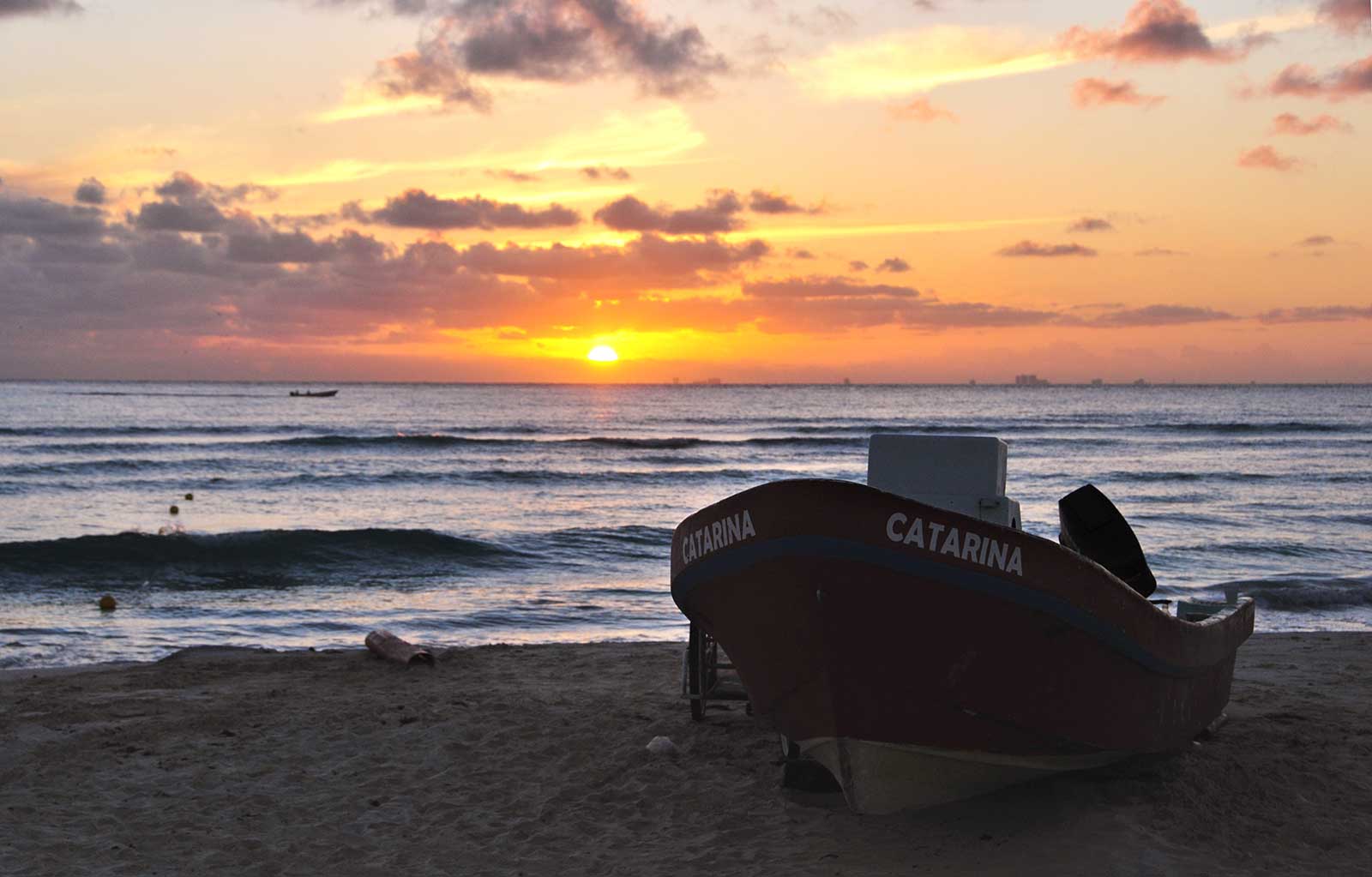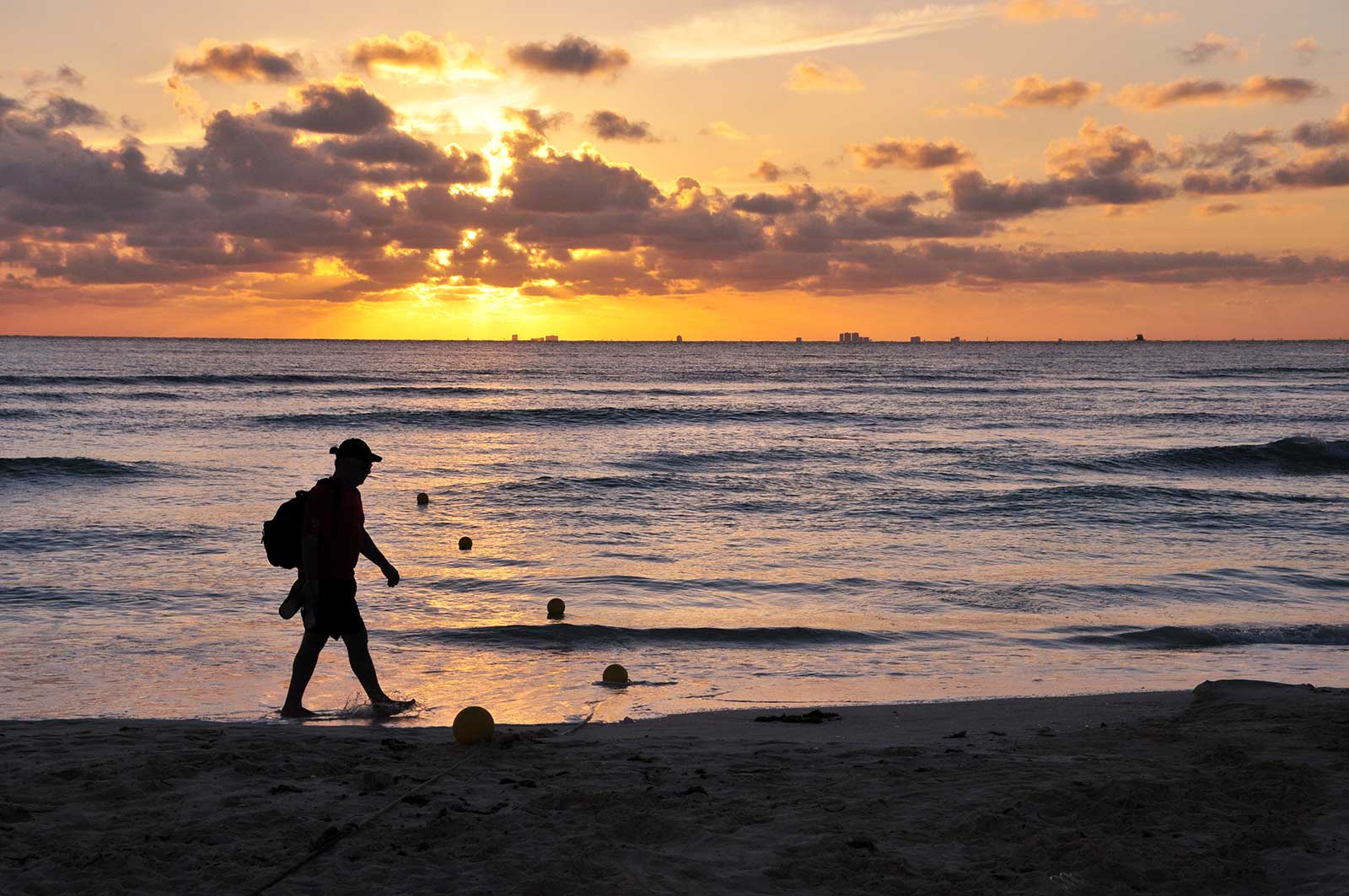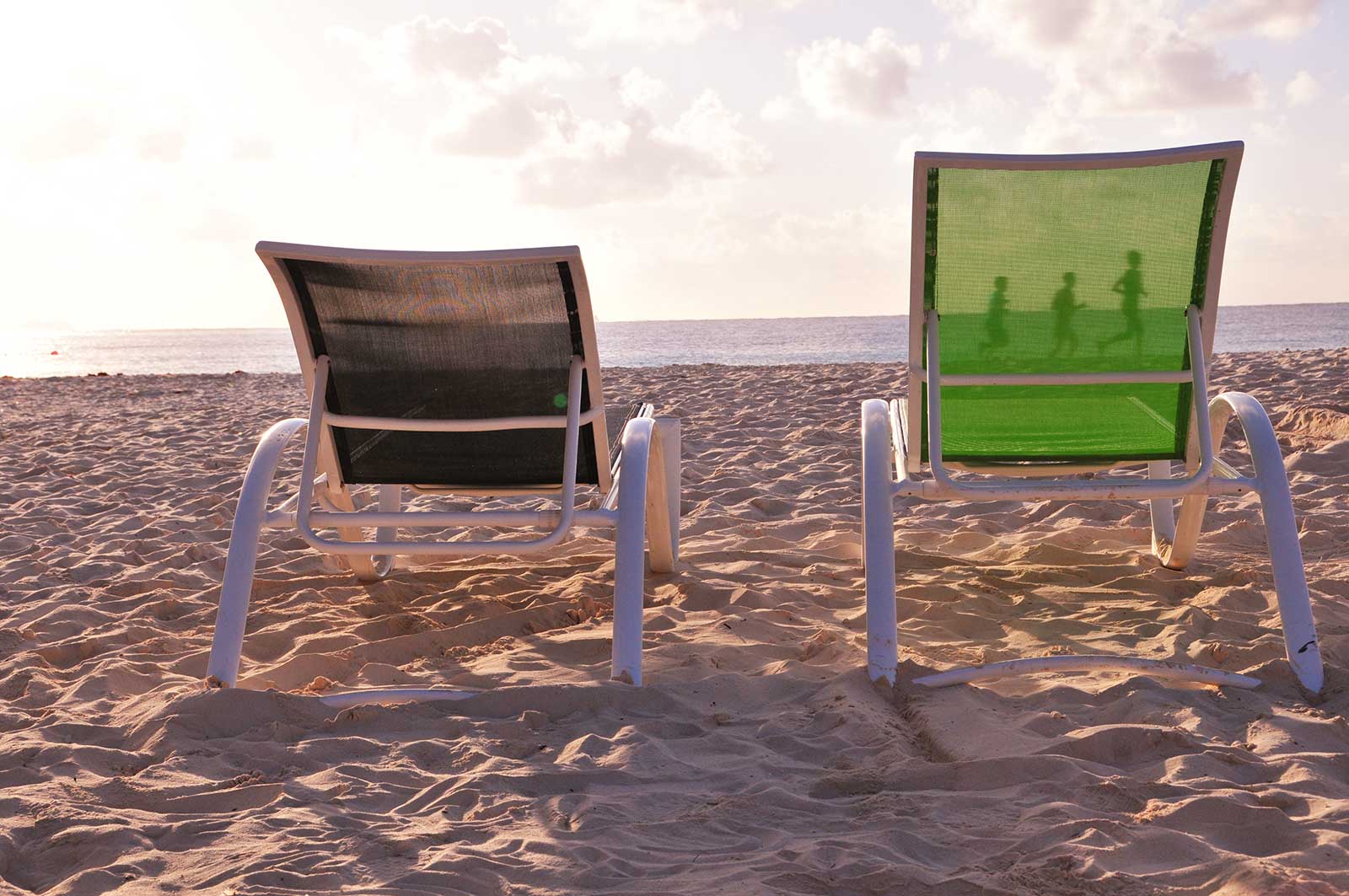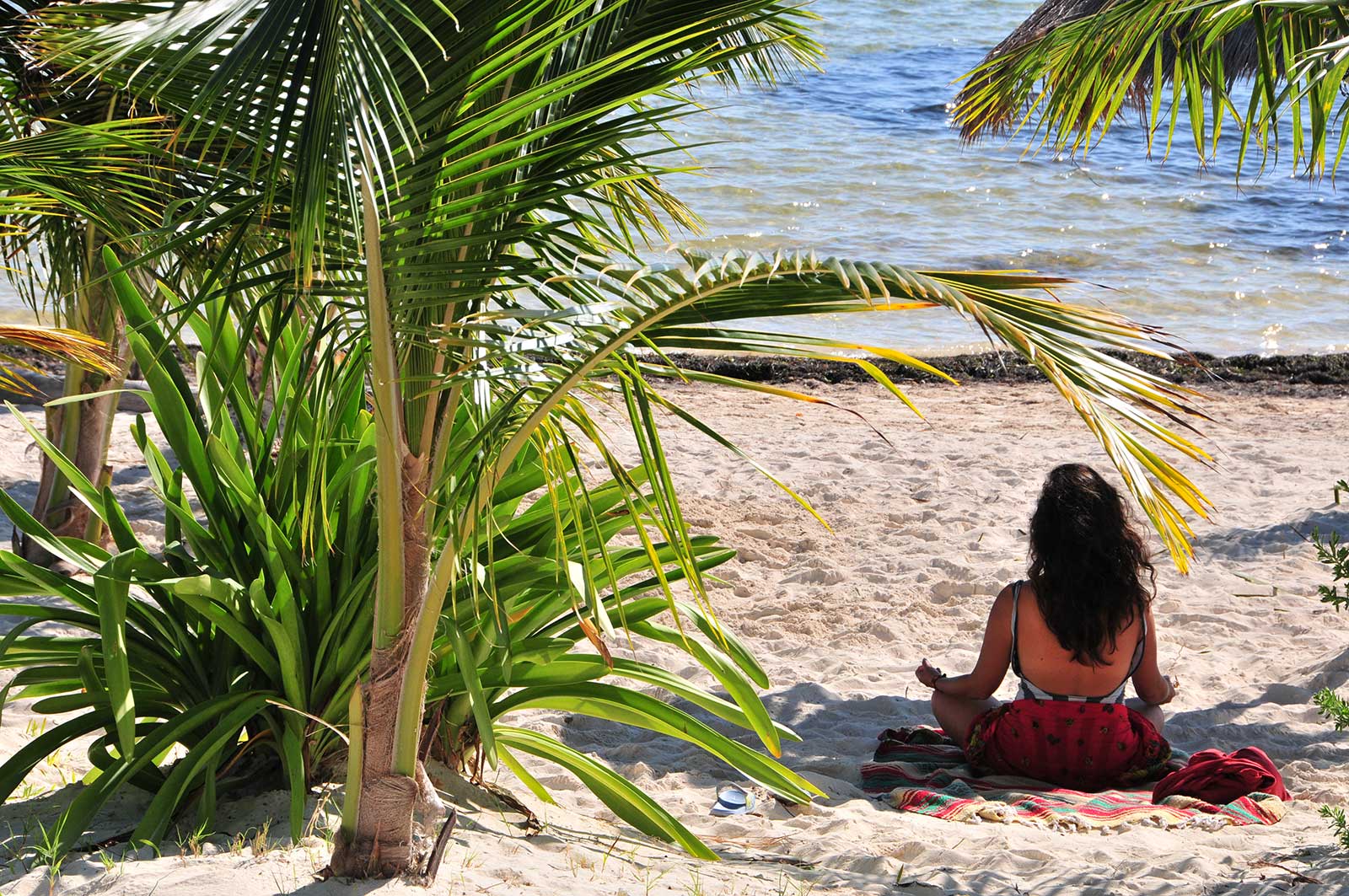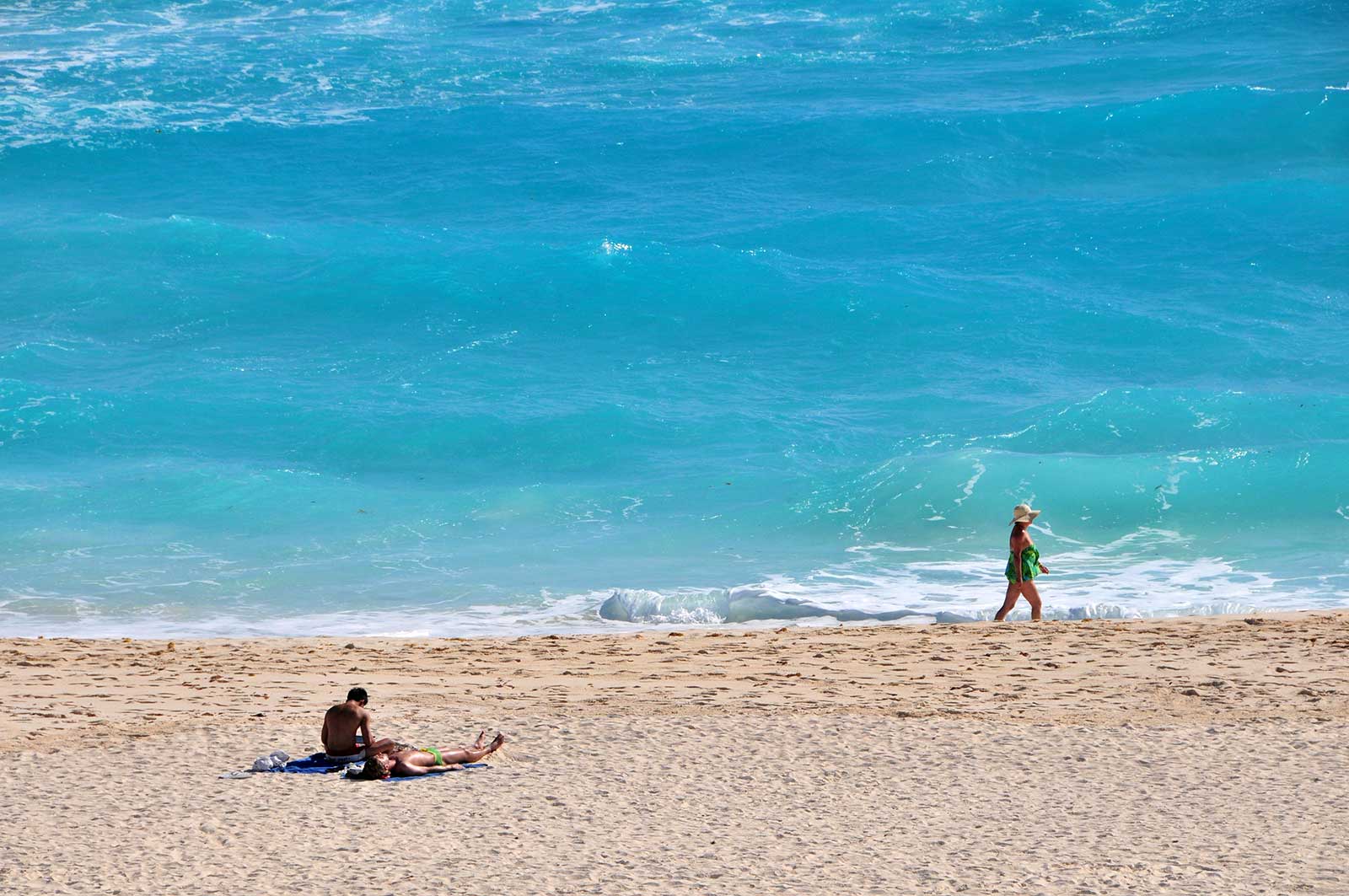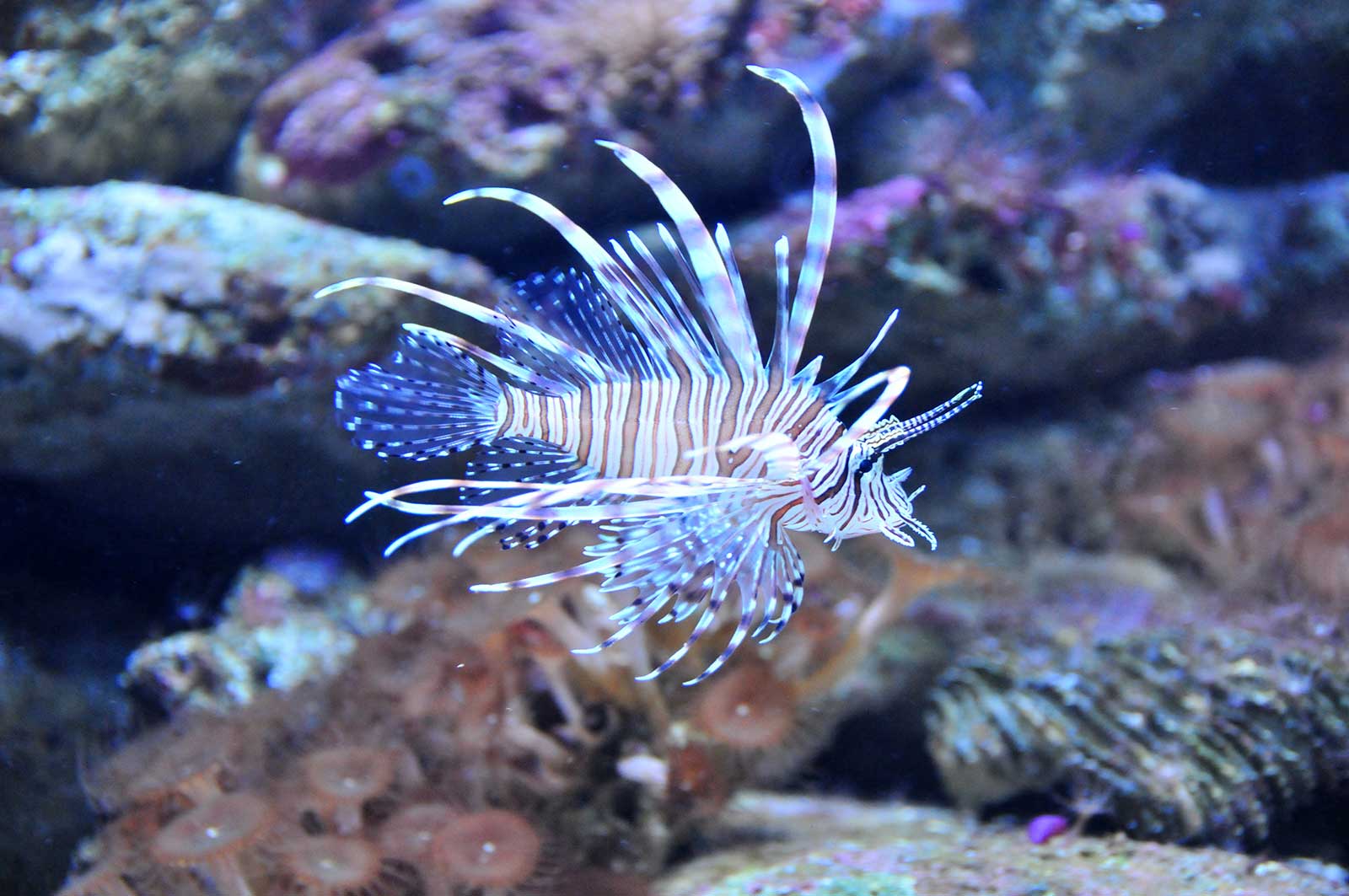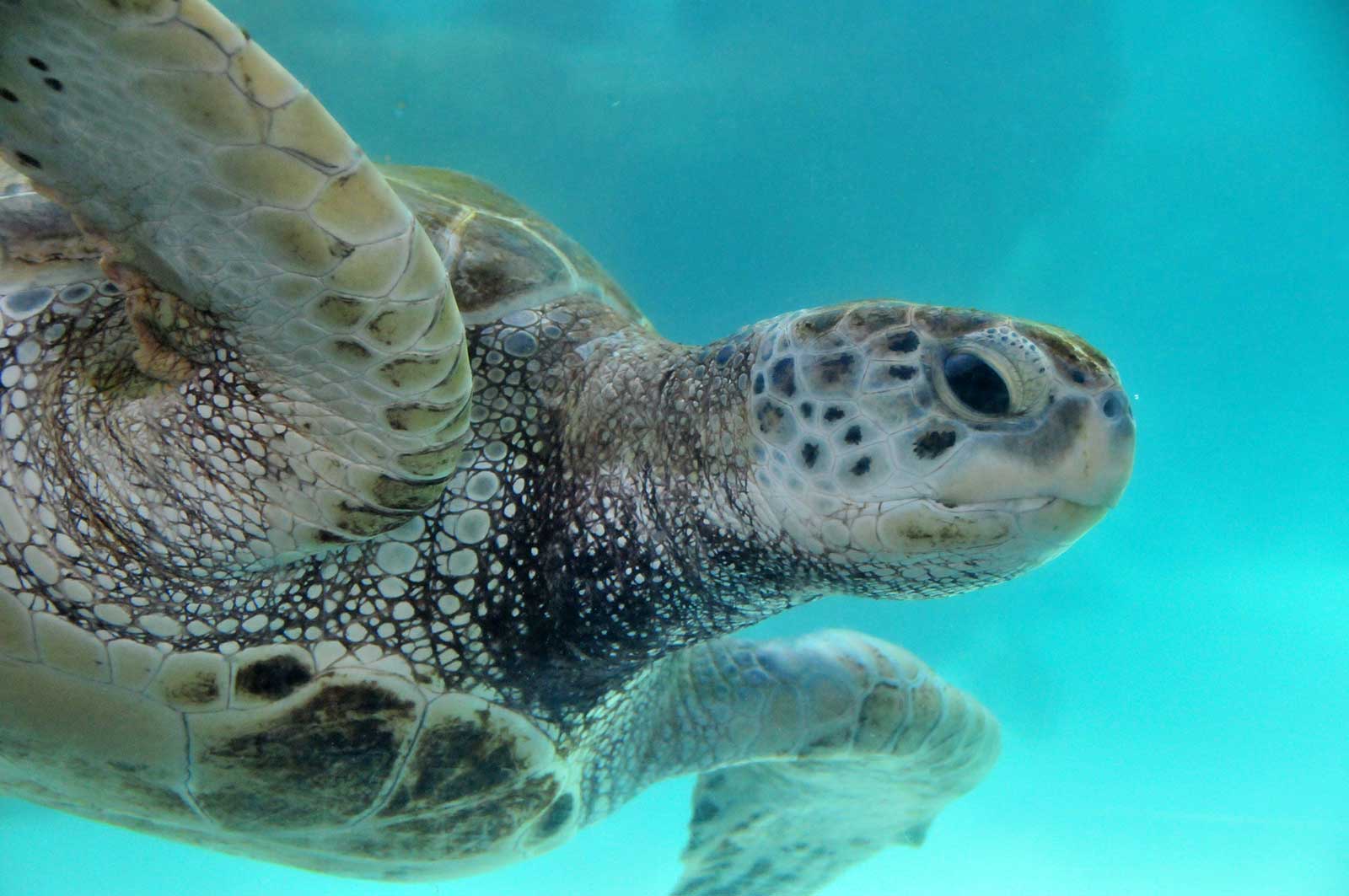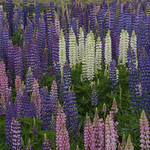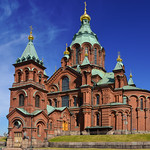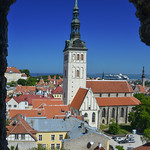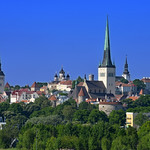1. Itinerary | 2. Chichen Itza | 3. Merida & Ruta Puuc | 4. Uxmal
5. Ek Balam | 6. Tulum & Coba | 7. Playa Del Carmen | 8. Cancun
21st Dec 2011 – Merida and Ruta Puuc
Thanks to the chirping birds and our body clocks still running on GMT we had an early morning start to Merida. As I was feeling a bit unsure about the car and the journey, in spite of having half a tank of petrol, I decided to fill up. There is a petrol pump at the end of Piste. We made our way on to the toll road again and there was hardly any traffic till one actually enters Merida. Once in there, one could get easily lost in the grid lock, fortunately our sat nav came in handy and a traffick policeman again guided us to a parking area quite close to the centre of town – Plaza Grande. Founded in 1542 by the Spaniard Francisco de Montejo over the ruins of the Mayan city T’ho and receiving its name to evoke the conquerors the city of Merida in Spain.
In many ways Merida was quite disappointing. The twon centre is quite nice but over all it is a reminder that Mexico is still part of the developing world. The wide roads and posh hotels one sees in Cancum are a bit of a mirage. Over all we spent about 4 hours in Merida. IN which we managed to see the main sites around the central plaza. Clearly to experience the town one would need to spend a night here. One of my colleagues who did most of his ruin touring based in Merida had described it as quite a rewarding experience.

First on our list was Cathedral de San Ildefonso. It was founded with the huge stones dismantled from the pyramids. Singularly vast and white, it is almost severe in its simplicity, reftlecting the trend towards crisper Renaissance design. After spending some time in the Cathedral we made our way to the Museo de Arte Contemparaneo Ateno de Yucatan situated next door.
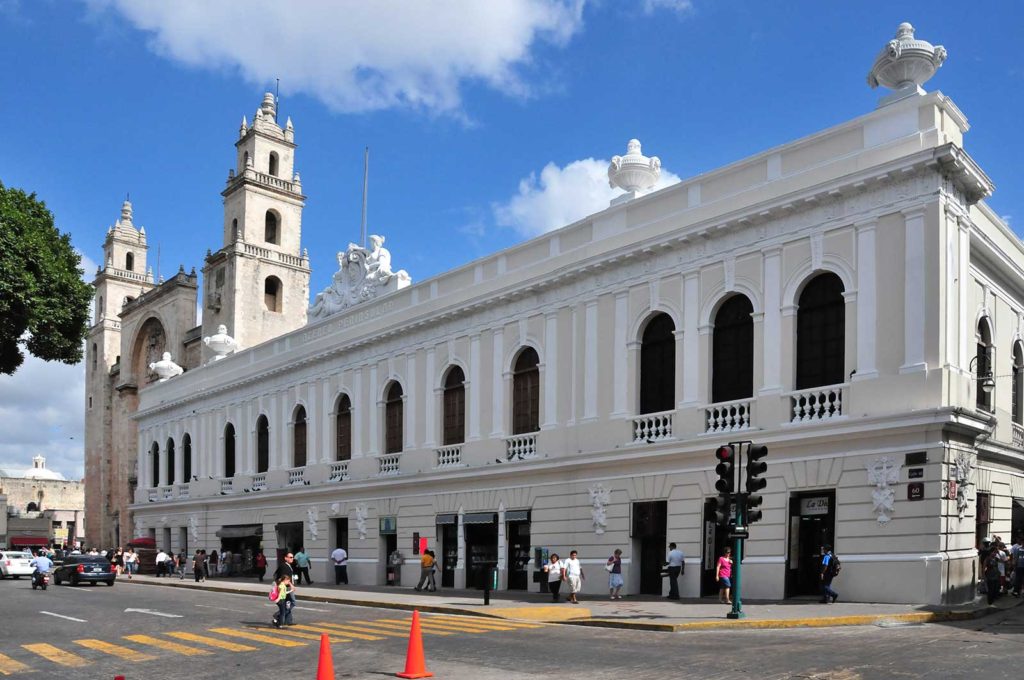
After this we dilly dallied for a little while whatto do next. We decided to get some lunch/brunch. We had almost made up our minds to head of towards Uxmal, but then on a whim decided to go into Casa de Montejo. The building now belongs to Banamex and one can walk around the lavishly restore wood panelled dining room and oter exhibits. The entrance though is in sharp contrast to the cathedral and is extremely ornate and decorated in the Plateresque style (propably the first instance of it in the new world. After this we headed of towards Uxmal.
Again decent roads, and within hour and a half we were at our hotel, Hacienda Uxmal. It was about 2 pm and we had a choice either to check in and relax or try and do the Ruta Puuc site and have a slightly more relaxed day tomorrow. All the archaeological site close at 5 pm and I just felt that we had not got enough out of the day for it to be a memorable one, so Ruta Puuc it was.
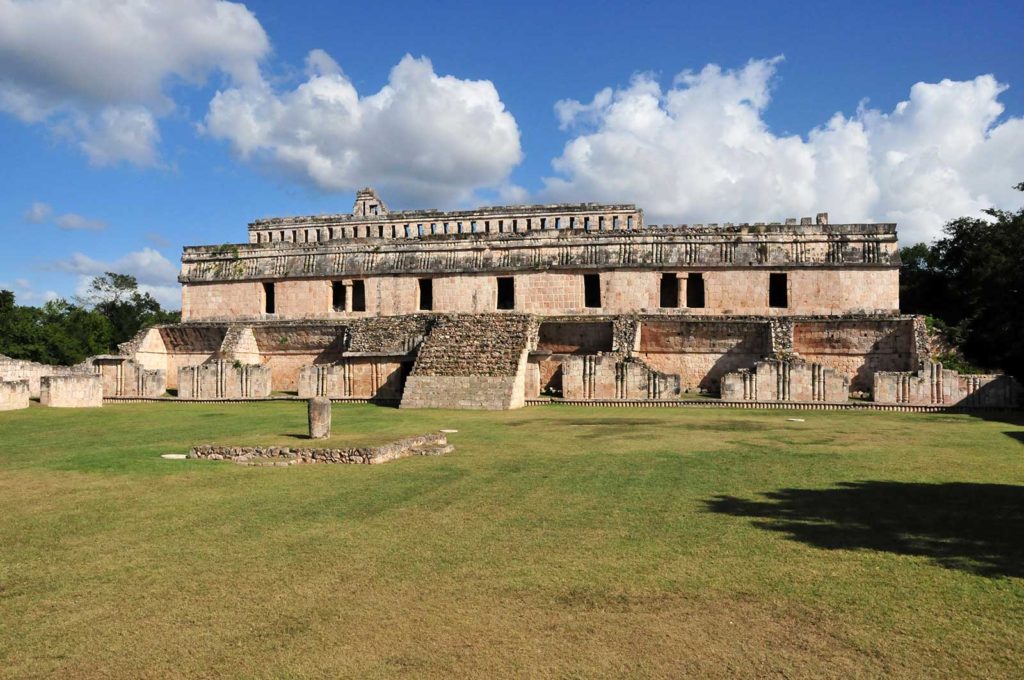
The extensive site of Kabah is about 25 kmsfrom Uxmal. The name “Kabah” or “Kabaah” is usually taken to be archaic Maya language for “strong hand”. This is a pre-Columbian name for the site, mentioned in Maya chronicles. An alternative name is Kabahaucan or “royal snake in the hand”. The area was inhabited by the mid 3rd century BC. Most of the architecture now visible was built between the 7th century and 11th centuries AD. A sculpted date on a doorjamb of one of the buildings gives the date 879, probably around the city’s height. Another inscribed date is one of the latest carved in the Maya Classic style, in 987. Kabaah was abandoned or at least no new ceremonial architecture built for several centuries before the Spanish conquest of Yucatán.

The most famous structure at Kabah is the “Palace of the Masks”, the façade decorated with hundreds of stone masks of the long-nosed rain god Chaac; it is also known as the Codz Poop, meaning “Rolled Matting”, from the pattern of the stone mosaics. This massive repetition of a single set of elements is unusual in Maya art, and here is used to unique effect.
Codz Poop – Temple of the Masks.Masks of the rain god abound on other structures throughout the site. Copal incense has been discovered in some of the stone noses of the raingods. The emphasis placed on Chaac, the “Protector of the Harvest”, both here and at other neighboring Puuc sites, stemmed from the scarcity of water in the region. There are no cenotes in this dryer, northern part of the Yucatán, so the Maya here had to depend solely on rain.
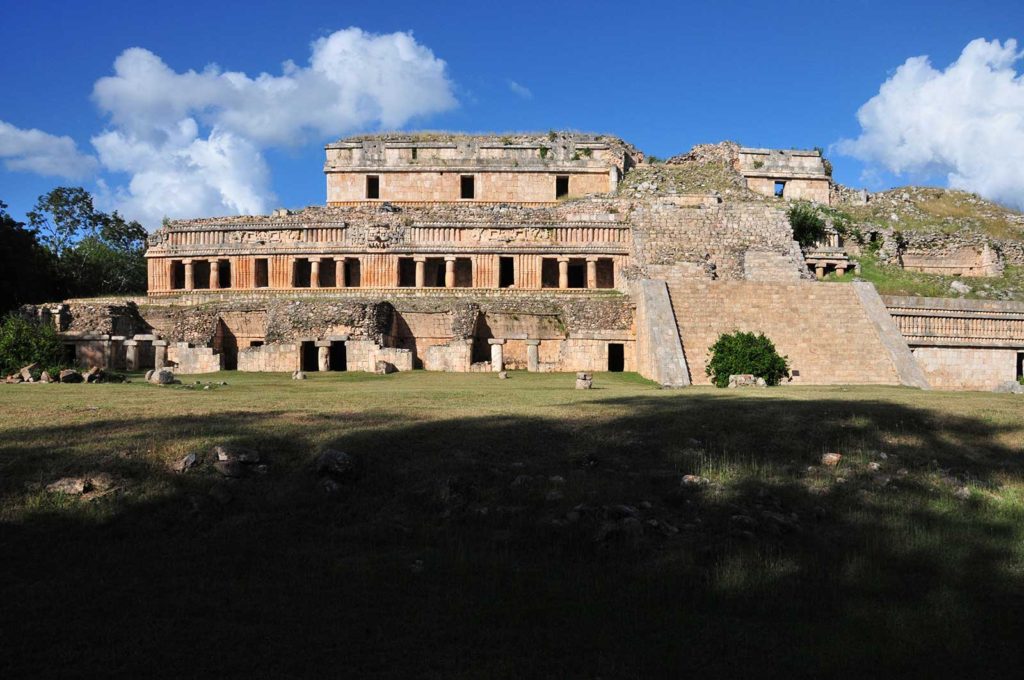
From Kabah we went to Sayil. It is roughly 10 kms from Kabah. The site is dominated by the three storey Gran Palacio, each storey smaller than the one below. Although several large masks with prtruding noses adorna frieze on the middle level, the decoration mostly takes the form of bamboo effect stone pillaring.
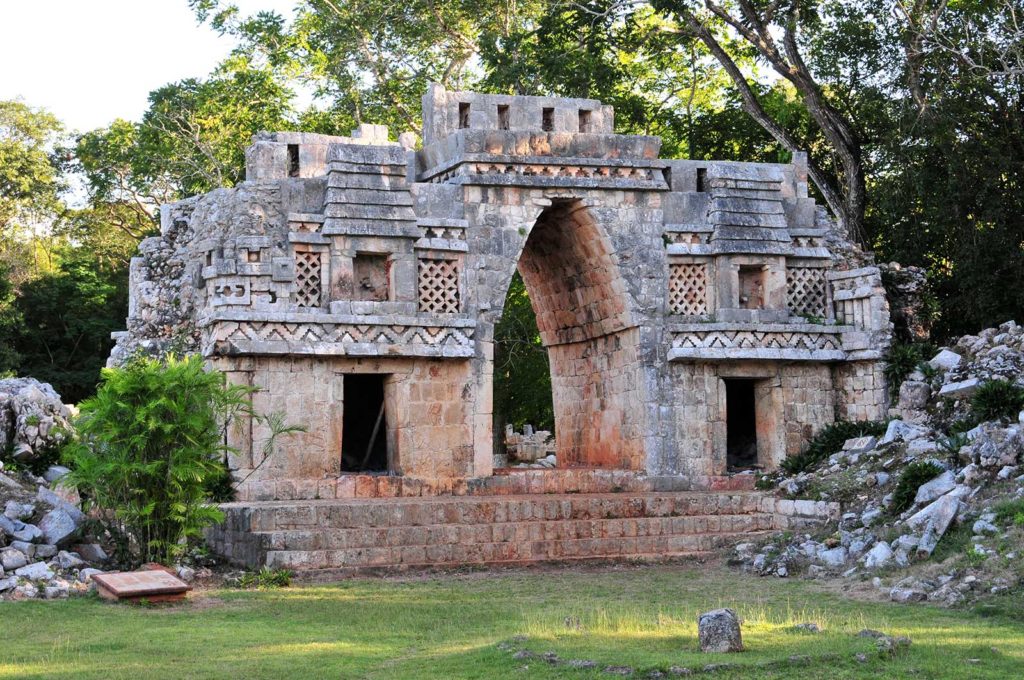
I was worried about running out of time to see the third major site on Ruta Puuc, Labna. So we skipped Xlapak and went straight to the last one. We knew we could not make it to the Grutas de Loltun in the limited time, so Ihad given up on that one. Labna though is quite an impressive site. Historically it is far less important than Sayil but in many ways far more impressive. The Arco de Labna is quite a site to behold. Catherwood’s frawings to bring it to life and add another dimension. The palace is simillar to the one in Sayil, but not as impressive.
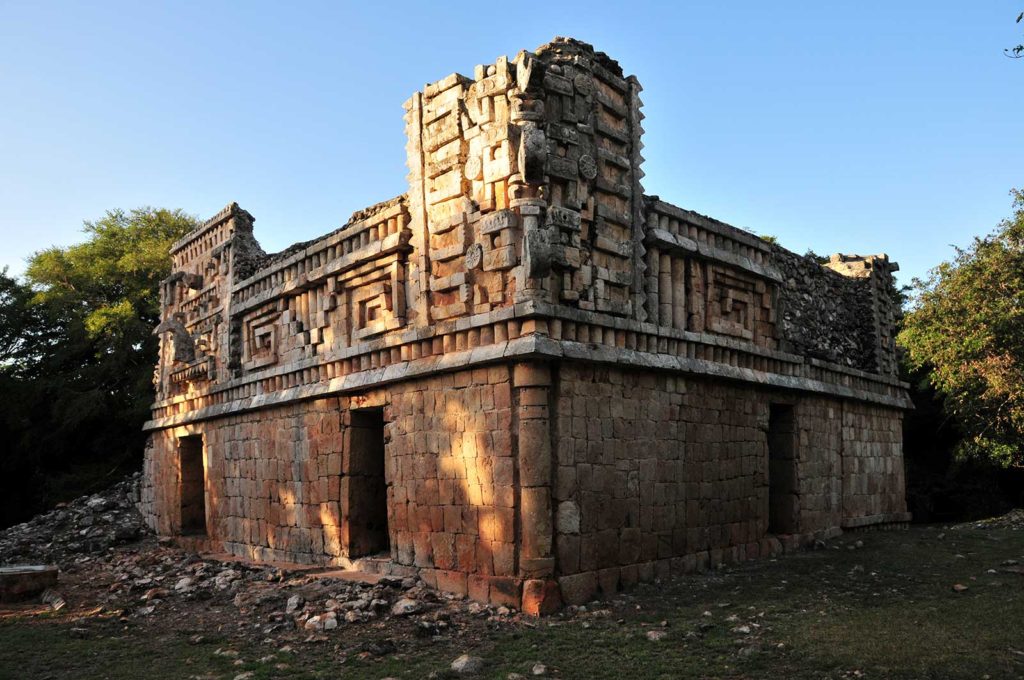
The final site on Ruta Puuc that we saw was Xlapak, there is only restored building, a small but elgant palce with huge masks over its doorwars and and at the corners. After this we drove back to the hotel, Hacienda Uxmal, quite a good hotel actually. The room that we stayed in had been habited by the Sultan of Iran. Almost every room had some royal dignitary or a public figure living in it. the room next door had a German chancellor as a resident in it. Interesting the key rings had the emblem of the country whose ruler had been in the room. Simple but quite a nice touch. Again another day well spent, particularly the Ruta Puuc sites and specially Kabah. Other than the Nunnery Annex in Chichen Itza none of them had the level of detail which was conserved in these buildings on the Ruta Puuc.
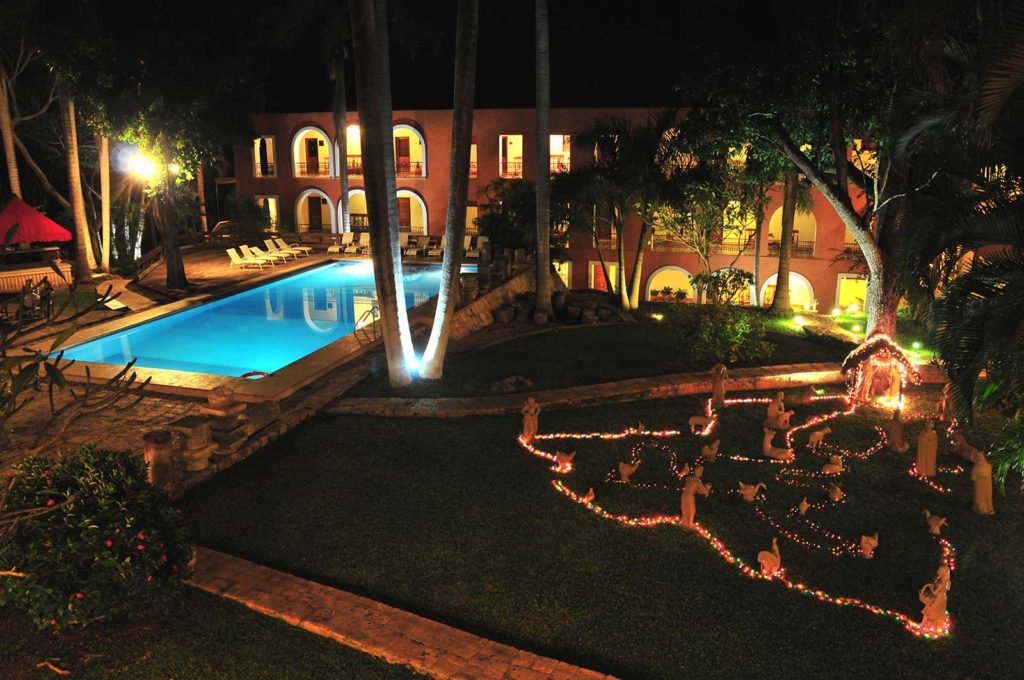
1. Itinerary | 2. Chichen Itza | 3. Merida & Ruta Puuc | 4. Uxmal | 5. Ek Balam | 6. Tulum & Coba | 7. Playa Del Carmen | 8. Cancun
